#Reference guides
Text
RESOURCES FOR POSES
Line of Action

JustSketch.Me

PoseManiacs

Human-Anatomy-For-Artist.com

MagicPoser
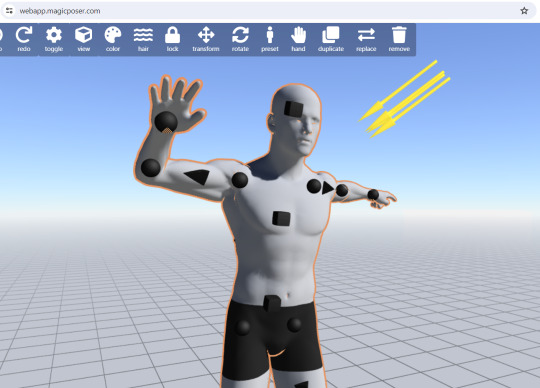
MIXAMO

Pose Archives

Bodies in Motion
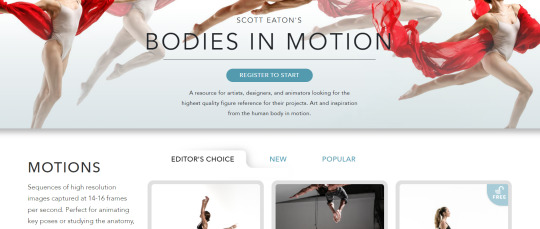
Posemy.art
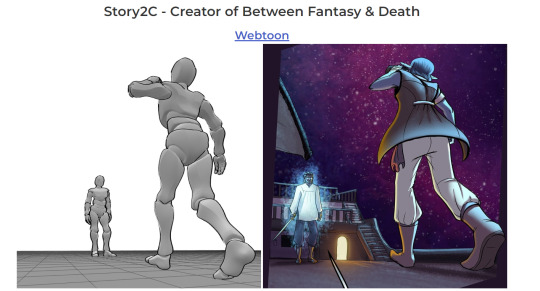
ReferenceAngle
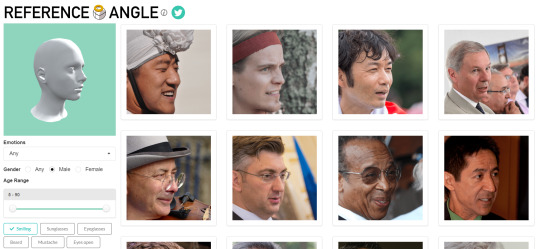
CroquisCafe
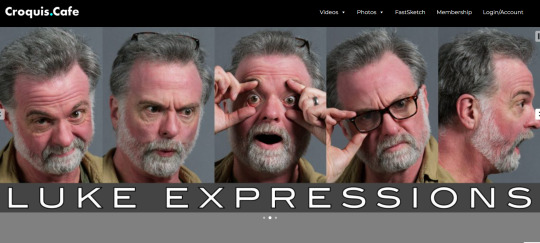
#reference#tutorial#art reference#anatomy#art#poses#artist#art resources#resources#web#pages#help#guide#action#line#figure#body#muscles#human#animal#animation#photography#3d model#angles#views#expressions#faces#emotion
17K notes
·
View notes
Text
Fantasy Guide to Building A Culture

Culture is defined by a collection of morals, ethics, traditions, customs and behaviours shared by a group of people.
Hierarchy and Social Structures

Within every culture, there is a hierarchy. Hierarchies are an important part of any culture, usually do ingrained that one within the culture wouldn't even question it. Hierarchy can be established either by age, gender or wealth and could even determine roles within their society. Sometimes hierarchy can may be oppressive and rigid whilst other times, ranks can intermingle without trouble. You should consider how these different ranks interact with one another and whether there are any special gestures or acts of deference one must pay to those higher than them. For example, the Khasi people of Meghalaya (Northern India), are strictly matrillineal. Women run the households, inheritance runs through the female line, and the men of the culture typically defer to their mothers and wives. Here are a few questions to consider:
How is a leader determined within the culture as a whole and the family unit?
Is the culture matriarchal? Patriarchal? Or does gender even matter?
How would one recognise the different ranks?
How would one act around somebody higher ranking? How would somebody he expected to act around somebody lower ranking?
Can one move socially? If not, why? If so, how?
Traditions and Customs

Traditions are a staple in any culture. These can be gestures or living life a certain way or to the way a certain person should look. Traditions are a personal detail to culture, they are what make it important. Tradition can dictate how one should keep their home, run their family, take care of their appearance, act in public and even determine relationship. Tradition can also be a double edged sword. Traditions can also be restrictive and allow a culture to push away a former member if they do not adhere to them, eg Traditional expectations of chastity led to thousands of Irish women being imprisoned at the Magdelene Laundries. Customs could be anything from how one treats another, to how they greet someone.
How important is tradition?
What are some rituals your culture undertakes?
What are some traditional values in your world? Does it effect daily life?
Are there any traditions that determine one's status?
Values and Opinions
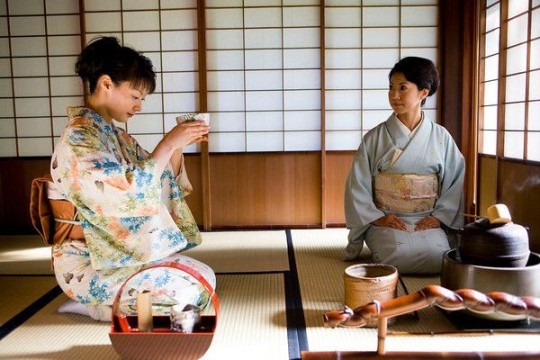
Values and Opinions are the bread and butter of any culture. This is the way your culture sees the world and how they approach different life hurdles. These may differ with other cultures and be considered odd to outsiders, what one culture may value another may not and what opinion another holds, one may not. There will be historical and traditional reasons to why these values and opinions are held. Cultures usually have a paragon to which they hold their members to, a list of characteristics that they expect one to if not adhere to then aspire to. The Yoruba people value honesty, hard work, courage and integrity. Here are some questions to consider?
How important are these ethics and core values? Could somebody be ostracised for not living up to them?
What are some morals that clash with other cultures?
What does your culture precieved to be right? Or wrong?
What are some opinions that are considered to be taboo in your culture? Why?
Dress Code

For many cultures, the way somebody dresses can be important. History and ethics can effect how one is meant to be dressed such as an expectation of chastity, can impose strict modesty. While other cultures, put more importance on details, the different sorts of clothes worn and when or what colour one might wear. The Palestinian people (من النهر إلى البحر ، قد يكونون أحرارا) denoted different family ties, marriage status and wealth by the embroidery and detailing on their thoub.
Are there traditional clothes for your world? Are they something somebody wears on a daily basis or just on occasion?
Are there any rules around what people can wear?
What would be considered formal dress? Casual dress?
What would happen if somebody wore the wrong clothes to an event?
Language

Language can also be ingrained as part of a Culture. It can be a specific way one speaks or a an entirely different language. For example, in the Southern States of America, one can engage in a sort of double talk, saying something that sounds sweet whilst delivering something pointed. Bless their heart. I have a post on creating your own language here.
Arts, Music and Craft

Many cultures are known for different styles of dance, their artwork and crafts. Art is a great part of culture, a way for people to express themselves and their culture in art form. Dance can be an integral part of culture, such as céilí dance in Ireland or the Polka in the Czech Republic. Handicrafts could also be important in culture, such as knitting in Scottish culture and Hebron glass in Palestine. Music is also close to culture, from traditional kinds of singing such as the White Voice in Ukraine and the playing of certain instruments such as the mvet.
Food and Diet
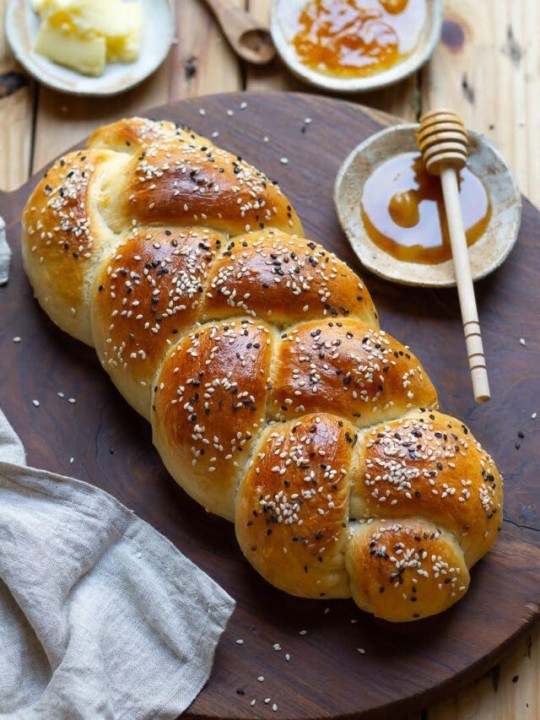
The way a culture prepares or intakes or treats certain foods are important to a culture. In some cultures, there is a diet yo adhere to, certain foods are completely banned. With Jewish culture, pork is prohibited along with fish such as sturgeon, along with shellfish and certain fowl. Meat must also be prepared in a certain way and animal byproducts such as dairy, must never be created or even eaten around this meat. This is known as kosher. The way one consumes food is also important to culture. In some cultures, only certain people may eat together. Some cultures place important on how food is eaten. In Nigerian culture, the oldest guests are served first usually the men before the women. In Japanese culture, one must say 'itadakimasu' (I recieve) before eating. Culture may also include fasting, periods of time one doesn't intake food for a specific reason.
What are some traditional dishes in your world?
What would be a basic diet for the common man?
What's considered a delicacy?
Is there a societal difference in diet? What are the factors that effect diet between classes?
Is there any influence from other cuisines? If not, why not? If so, to what extent?
What would a typical breakfast contain?
What meals are served during the day?
What's considered a comfort food or drink?
Are there any restrictions on who can eat what or when?
Are there any banned foods?
What stance does your world take on alcohol? Is it legal? Can anybody consume it?
Are there any dining customs? Are traditions?
Is there a difference in formal meals or casual meals? If so, what's involved?
Are there any gestures or actions unacceptable at the dinner table?
How are guests treated at meals? If they are given deference, how so?
#Fantasy Guide to Building A Culture#As promised#If I fail my German exam I'm blaming ye#Culture#Building a culture#Fantasy Guide#WorldBuilding#WorldBuilding guide#WorldBuilding help#Writing help#writing#writeblr#writing resources#writing reference#writing advice#ask answered questions#writers#writing advice writing resources#spilled ink#ask answered
10K notes
·
View notes
Text
Weekly Grammar Tip: Power of the Period (Literally)
Ever wondered how a tiny dot can make or break your writing? That's the power of the period! This punctuation mark does more than just end sentences. It adds rhythm, clarity, and even drama to your prose. Here are some tips:
Keep It Short and Simple
Long sentences can confuse readers and water down your message. Break up complex ideas with periods for bite-sized, easy-to-digest chunks.
Example:
Before: The alchemist worked tirelessly in his dimly lit laboratory, mixing potions, consulting ancient texts, and conducting experiments late into the night.
After: The alchemist worked tirelessly in his dimly lit laboratory. He mixed potions, consulted ancient texts, and conducted experiments late into the night.
Dodge the Run-Ons
Run-on sentences happen when independent clauses are strung together without proper punctuation or conjunctions. Periods help you avoid these and keep your grammar game strong.
Example:
Before: Lady Isabella entered the room she surveyed the scene with a keen eye.
After: Lady Isabella entered the room. She surveyed the scene with a keen eye.
Spotlight Key Points
Short sentences can emphasize important details and add a dramatic flair. Periods create natural pauses to let your key information shine.
Example:
Before: In the heart of London, amidst the chaos and noise, a secret meeting took place that would change everything.
After: In the heart of London, amidst the chaos and noise, a secret meeting took place. It would change everything.
Mix It Up for Rhythm
A blend of short and long sentences creates an engaging rhythm in your writing. Periods allow you to control this flow and keep readers hooked.
Example:
Before: Elizabeth Thorn, a skilled herbalist, used her knowledge to heal the sick during the Great Plague, her potions and remedies providing much-needed relief to those who were suffering.
After: Elizabeth Thorn, a skilled herbalist, used her knowledge to heal the sick during the Great Plague. Her potions and remedies provided much-needed relief to those who were suffering.
#creative writing#on writing#writing#writeblr#thewriteadviceforwriters#writing tips#writers block#how to write#writers and poets#writers on tumblr#grammar#writing guide#novel writing#writing a book#writing blog#writing characters#writing advice#writing help#writing inspiration#writing community#writing ideas#writing reference#writing resources#writing prompts#writing software#romance writing#writing tools#writing life#writer#writing tips and tricks
2K notes
·
View notes
Text
Beating the Heat while Fat: A Summer Survival Guide
Summer is (almost) here and it’s going to be hotter than ever. If you’re fat (like me), you know how much hot weather sucks. Specifically, we get to deal with fun issues like underboob sweat, chub rub, skin fold sunburn, and more. And while I like to take a body neutral approach to everything, this can be hard in summer thanks to exclusion and neglect.
The thing is that not a lot of people really... talk about these things, though, because that would interfere with our image of summer. Not a lot of companies are marketing their stuff as a solution to fat people’s problems, because that would be acknowledging that fat people might actually want to go outside during summer.
Having been fat for many a summer now, I want to share some of my resources for enjoying summer! These are all based on personal recommendations and things I have directly experienced. Please feel free to reblog and add on with your experiences and recommendations!
However, if your commentary is even remotely fatphobic, you will be blocked and your comments will be deleted. This post is not for you, and nobody is actually interested in what you have to say!
Back and Underboob Sweat
Two words: Gold Bond. Gold Bond fixes this. It comes in powder, stick, and spray form. I’ve used the powder in shoes, but not on my body. They’ve recently released an invisible form of the spray, which I’m very excited about.
Spray this under your breast tissue or other skin folds, or on flat areas of skin like your lower back that tend to sweat. Some of their powders have aloe in them, which is delightfully soothing for the skin.
Make sure that if you’re sensitive to scent, you buy one of the unscented versions. The “fresh” scent is nice, but it is a scent!
When you’re using this type of spray, do it clean but dry. Don’t do it right after a shower- give your skin a chance to dry off. Lift your breast or skin fold, spray underneath, and then hold it for a couple of seconds to let the spray dry down.
You can also use other types of powder, like body powder or baby powder. There’s mixed evidence about talc-containing powder and its link to cancer, but some people do find talcum powder more irritating than talc-free powder, so whether or not you use this is up to you.
Do keep in mind that this is NOT sunscreen! Apply your sunscreen first for areas of exposed skin.
Chub Rub
Dealing with the tops of your thighs rubbing together is extremely unfun. There are a couple of ways I like to deal with this!
Slip Shorts
I actually reviewed a bunch of these a few years ago. Slip shorts or bike shorts are perfect for wearing under dresses or loose-fitting rompers as a way to stop your thighs from rubbing. As a bonus, if you’re using bike shorts, sometimes they come with extra pockets to stash stuff in.
Friction Sticks
If you’re wearing a swimsuit and don’t want to wear shorts, or just don’t want to wear shorts, period, then a friction stick is another good way to avoid chub rub! I have a couple, Bodyglide and Gold Bond.
If you’re buying Bodyglide, they have one that’s just as good, Bodyglide Outdoor, that is sometimes cheaper. There’s a Bodyglide “For Her” which I’ve never tried, but that’s usually more expensive and let’s be real, do you really need to moisturize your inner thighs? I think not!
There’s also creams you can use but I find those messy and less effective than the sticks. You might like them, though! Experiment with products to find the one(s) that work for you.
Friction sticks can also stop foot blisters. Rub a little on your heel, toe, or wherever you get hot spots.
Dealing With Sweat
I sweat, you sweat, we all sweat. Humans were meant to sweat. Sweating’s a good thing. But that doesn’t mean it’s fun, and frankly I hate being sweaty. Typically, fat people sweat more than thin people, for several reasons related to the way we thermoregulate.
Fortunately, there are lots of ways to make summer sweating less annoying. I’ve written about this before, so you can check out that post for some of my favorite tips for dealing with sweat. Here’s some of the highlights.
Evaporative Cooling
A bandanna or other wrap filled with water crystals can do AMAZING things. You can make this yourself really easily- if you can’t find water crystals, you can just use Orbeez. They sell little 99 cent packs of those in the checkout lines at some stores and at the dollar store, and you can make several cooling wraps with one packet.
You can also get evaporative cooling towels, like Frogg Toggs. I don’t like those as much because they tend to start smelling a little funny, but they’re great for larger area coverage.
Using these will help cool you down and will do the same thing that sweat does– without being sticky.
Hair
If you have long hair, get it off the back of your neck. I used to put it up in a bun with a bun former, but now I just use claw clips. They’re cuter and easier! Seriously, this will help you so much. Get the hair up and away from your skin, you’ll feel so much better.
Hand Fans
I always have a hand fan with me, but not one of the little battery operated ones. I’ve tried a lot of those! I even took one up a mountain once, and it was the only reason I survived. But they never provide the same level of breeze that my folding fan does.
I use this one because it’s cute, and you can get cute ones for a couple bucks on Amazon. I do prefer fabric to the stiff paper ones, just because they’re a bit more durable- I’ve had mine for years now. It’s good.
I’m also not a huge fan of those fans that go around your neck, but I’ve seen many people enjoying them. If they work for you, great!
Hydration and Electrolytes
Carry water with you when you go places, and if you’re gonna be out for a while doing anything strenuous, take some electrolyte tablets with you. I like Nuun because I think they taste good, but there’s lots of brands out there.
There’s no one mineral called electrolyte, just so you know. Electrolytes are a group of minerals that includes sodium, potassium, and chloride as the primary (or significant) electrolytes.
Electrolytes are important because they have a natural positive or negative electrical charge when dissolved in water. This electricity is how your nerves transmit information and how your cells make your muscles contract, so low levels of electrolytes can cause some serious issues.
Different electrolyte imbalances have different symptoms, but common symptoms include nausea, fatigue, confusion, tremors, muscle spasms (cramps), and dizziness.
If you’re feeling those as you’re moving around outside, get somewhere cool, drink some water, and either eat some food or add electrolyte tablets to your water. This will help stabilize you quickly!
Skin Fold Sunburn Prevention
Everybody should wear sunscreen, period. End of story.
But if you’re applying sunscreen by yourself and you have skin folds, it can be a pain to reach them! This is especially true for any folds that form on your upper back or around your upper arm.
These areas can burn and be very painful, especially if you’re in swimwear or a sleeveless top. It’s also VERY easy to forget that these areas need sunscreen!
If you don’t want or don’t have someone to help you apply those areas you can’t reach, spray sunscreen can be a way to get those areas. If you don’t like the spray or want heavier coverage with a cream, then use a lotion applicator!
If the stick style doesn’t work for you (like if you have shoulder mobility issues), the strap style asks for a different range of motion. If you can’t find one that works for you at a big box store, look at a pharmacy. These are often sold as disability aids or for elderly people with a reduced range of motion.
But honestly, one of the most important things about this is just knowing your body. Know where your skin folds are and think about how they move as you’re applying sunscreen. Get underneath them- as you move, those areas can be exposed to the sun, too.
So yeah, that’s my best advice for beating the heat while fat. If you’ve got other tips, feel free to share them!
#summer#body neutrality#i do not know how to tag this#also please don't complain about the length of the post#it's a reference guide a tldr would be meaningless
8K notes
·
View notes
Text
Where to Start Your Research When Writing a Disabled Character
[large text: Where to Start Your Research When Writing a Disabled Character]
So you have decided that you want to make a disabled character! Awesome. But what's next? What information should you decide on at the early phrase of making the character?
This post will only talk about the disability part of the character creation process. Obviously, a disabled character needs a personality, interests, and backstory as every other one. But by including their disability early in the process, you can actually get it to have a deeper effect on the character - disability shouldn't be their whole life, but it should impact it. That's what disabilities do.
If you don't know what disability you would want to give them in the first place;
[large text: If you don't know what disability you would want to give them in the first place;]
Start broad. Is it sensory, mobility related, cognitive, developmental, autoimmune, neurodegenerative; maybe multiple of these, or maybe something else completely? Pick one and see what disabilities it encompasses; see if anything works for your character. Or...
If you have a specific symptom or aid in mind, see what could cause them. Don't assume or guess; not every wheelchair user is vaguely paralyzed below the waist with no other symptoms, not everyone with extensive scarring got it via physical trauma. Or...
Consider which disabilities are common in real life. Cerebral palsy, muscular dystrophy, stroke, cataracts, diabetes, intellectual disability, neuropathy, multiple sclerosis, epilepsy, thyroid disorders, autism, dwarfism, arthritis, cancers, brain damage, just to name a few.
Decide what specific type of condition they will have. If you're thinking about them having albinism, will it be ocular, oculocutaneous, or one of the rare syndrome-types? If you want to give them spinal muscular atrophy, which of the many possible onsets will they have? If they have Ehlers-Danlos Syndrome, which one out of the 13 different types do they have? Is their amputation below, or above the knee (it's a major difference)? Not all conditions will have subtypes, but it's worth looking into to not be surprised later. This will help you with further research.
If you're really struggling with figuring out what exact disability would make sense for your character, you can send an ask. Just make sure that you have tried the above and put actual specifics in your ask to give us something to work with. You can also check out our "disabled character ideas" tag.
Here are some ideas for a character using crutches.
Here are some ideas for a character with a facial difference (obligatory link: what is a facial difference?).
If you already know what disability your character is going to have;
[large text: If you already know what disability your character is going to have;]
Start by reading about the onset and cause of the condition. It could be acquired, congenital, progressive, potentially multiple of these. They could be caused by an illness, trauma, or something else entirely. Is your character a congenital amputee, or is it acquired? If acquired - how recently? Has it been a week, or 10 years? What caused them to become disabled - did they have meningitis, or was it an accident? Again, check what your options are - there are going to be more diverse than you expect.
Read about the symptoms. Do not assume or guess what they are. You will almost definitely discover something new. Example: a lot of people making a character with albinism don't realize that it has other symptoms than just lack of melanin, like nystagmus, visual impairment, and photophobia. Decide what your character experiences, to what degree, how frequently, and what do they do (or don't do) to deal with it.
Don't give your character only the most "acceptable" symptoms of their disability and ignore everything else. Example: many writers will omit the topic of incontinence in their para- and tetraplegic characters, even though it's extremely common. Don't shy away from aspects of disability that aren't romanticized.
Don't just... make them abled "because magic". If they're Deaf, don't give them some ability that will make them into an essentially hearing person. Don't give your blind character some "cheat" so that they can see, give them a cane. Don't give an amputee prosthetics that work better than meat limbs. To have a disabled character you need to have a character that's actually disabled. There's no way around it.
Think about complications your character could experience within the story. If your character wears their prosthetic a lot, they might start to experience skin breakdown or pain. Someone who uses a wheelchair a lot has a risk of pressure sores. Glowing and Flickering Fantasy Item might cause problems for someone photophobic or photosensitive. What do they do when that happens, or how do they prevent that from happening?
Look out for comorbidities. It's rare for disabled people to only have one medical condition and nothing else. Disabilities like to show up in pairs. Or dozens.
If relevant, consider mobility aids, assistive devices, and disability aids. Wheelchairs, canes, rollators, braces, AAC, walkers, nasal cannulas, crutches, white canes, feeding tubes, braillers, ostomy bags, insulin pumps, service dogs, trach tubes, hearing aids, orthoses, splints... the list is basically endless, and there's a lot of everyday things that might count as a disability aid as well - even just a hat could be one for someone whose disability requires them to stay out of the sun. Make sure that it's actually based on symptoms, not just your assumptions - most blind people don't wear sunglasses, not all people with SCI use a wheelchair, upper limb prosthetics aren't nearly as useful as you think. Decide which ones your character could have, how often they would use them, and if they switch between different aids.
Basically all of the above aids will have subtypes or variants. There is a lot of options. Does your character use an active manual wheelchair, a powerchair, or a generic hospital wheelchair? Are they using high-, or low-tech AAC? What would be available to them? Does it change over the course of their story, or their life in general?
If relevant, think about what treatment your character might receive. Do they need medication? Physical therapy? Occupational therapy? Orientation and mobility training? Speech therapy? Do they have access to it, and why or why not?
What is your character's support system? Do they have a carer; if yes, then what do they help your character with and what kind of relationship do they have? Is your character happy about it or not at all?
How did their life change after becoming disabled? If your character goes from being an extreme athlete to suddenly being a full-time wheelchair user, it will have an effect - are they going to stop doing sports at all, are they going to just do extreme wheelchair sports now, or are they going to try out wheelchair table tennis instead? Do they know and respect their new limitations? Did they have to get a different job or had to make their house accessible? Do they have support in this transition, or are they on their own - do they wish they had that support?
What about *other* characters? Your character isn't going to be the only disabled person in existence. Do they know other disabled people? Do they have a community? If your character manages their disability with something that's only available to them, what about all the other people with the same disability?
What is the society that your character lives in like? Is the architecture accessible? How do they treat disabled people? Are abled characters knowledgeable about disabilities? How many people speak the local sign language(s)? Are accessible bathrooms common, or does your character have to go home every few hours? Is there access to prosthetists and ocularists, or what do they do when their prosthetic leg or eye requires the routine check-up?
Know the tropes. If a burn survivor character is an evil mask-wearer, if a powerchair user is a constantly rude and ungrateful to everyone villain, if an amputee is a genius mechanic who fixes their own prosthetics, you have A Trope. Not all tropes are made equal; some are actively harmful to real people, while others are just annoying or boring by the nature of having been done to death. During the character creation process, research what tropes might apply and just try to trace your logic. Does your blind character see the future because it's a common superpower in their world, or are you doing the ancient "Blind Seer" trope?
Remember, that not all of the above questions will come up in your writing, but to know which ones won't you need to know the answers to them first. Even if you don't decide to explicitly name your character's condition, you will be aware of what they might function like. You will be able to add more depth to your character if you decide that they have T6 spina bifida, rather than if you made them into an ambiguous wheelchair user with ambiguous symptoms and ambiguous needs. Embrace research as part of your process and your characters will be better representation, sure, but they will also make more sense and seem more like actual people; same with the world that they are a part of.
This post exists to help you establish the basics of your character's disability so that you can do research on your own and answer some of the most common ("what are symptoms of x?") questions by yourself. If you have these things already established, it will also be easier for us to answer any possible questions you might have - e.g. "what would a character with complete high-level paraplegia do in a world where the modern kind of wheelchair has not been invented yet?" is much more concise than just "how do I write a character with paralysis?" - I think it's more helpful for askers as well; a vague answer won't be much help, I think.
I hope that this post is helpful!
Mod Sasza
#mod sasza#writing reference#writing advice#writing resources#writeblr#writing disabled characters#writing resource#long post#writing tips#writing guide
3K notes
·
View notes
Text
WWC’s A Beginner’s Guide to Academic Research
We are pleased to present WWC’s A Beginner’s Guide to Academic Research!
This pandemic project has been over 2 years in the making and we hope it will greatly assist any of our readers who are eager to conduct in-depth research but may be at a loss where to start.
Go to the Guide Here
The guide is split into 6 parts:
Introduction and Table of Contents
Part 1: Getting Started
Part 2: Searching for Sources Online
Part 3: Evaluating Sources
Part 4: Navigating Academic Sources
Part 5: Recognizing Your Limits
Each portion of the guide has links to connect to the previous and next sections. While it is possible to view tumblr pages on phones and tablets through the app, we highly recommend viewing this guide via browser on desktop whenever possible. Tumblr page formatting is better suited for browsers and each section is very dense with information, which will make scrolling in the app or on your dashboard difficult.
Future FAQ/ Discussion:
As noted in part 5 of the guide, for the next two weeks, we will be keeping an eye on the notes for this post. If you have further questions or comments about academic research, drop them here and we will select the most pertinent to respond to in a later post.
If you find this guide helpful, we request that you consider tipping the moderators below for the work and time required from conception, to drafting, formatting and debugging. Their ko-fis are listed below:
Rina: https://ko-fi.com/arcanabean
Marika: https://ko-fi.com/5h1njuu
5K notes
·
View notes
Text
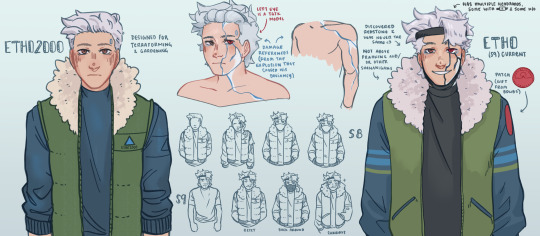
Finally: The Official DBHC Etho Reference Sheet!
I had to clarify that the “current” look is for Season 9, because I’m not sure how or if he’ll change for s10 yet! The “current” version is essentially his updated “default” look! Thought I might mention also that “Back Around” on the loose timeline lineup at the bottom is a reference to a song on his playlist in which he takes some time away from everyone after re-deviating to re-remember and find himself <3
Side note: Etho wears his mask under his chin mostly just around bdubs, but he starts wearing it down more often around doc, tango, or others who are used to seeing the damage. More than anything else, he’s sure to keep it for protection purposes when he’s outside working, exploring, or anything else that isn’t just hanging and chatting with friends :]
#dbhc ref#I’ll be putting all of the official character references and the Android guide under that tag btw!#dbhc#dbhc etho#dbhc art#ethoslab#hermitcraft au#hermitcraft#hermitcraft dbh au#etho#art escapades#VERY EXCITED TO SHARE THIS#this had been sitting in my folders finished for a while but I had to add a bunch of little notes that I forgot to initially!!!#IT WAS WILD DRAWING PRE-DEVIANT ETHO AGAIN THOUGH I miss him#not really but. yknow#I might make a note later about little changes that happen after destruction because I imagine doc and xisuma try very hard to#restore the cracks as close as they can but it’s not Perfect#BUT ANYWAY#YIPPE ETHO REF SHEET#character ref sheet#Android etho
2K notes
·
View notes
Text

"An Aunt May Seminar: So Your Kid Is Spiderman"
She also has an upcoming seminar called "A close friend is actually a backstabbing villain who tried to destroy your kid: How to let go of toxic people in your life."
#across the spider verse fanart#across the spiderverse#ats#spiderverse 2#spiderverse#spiderverse spoilers#kinda#more like comedic wishful thinking#aunt may#may parker#spider man#into the spider verse#references are life#other aunt may seminars include#how to fund your kid's superheroing#with a step by step guide on how to get money for everything#some only partly legal#“There will be lots of hospital bills. LOTS”#Hosting the avengers for dinner and why Hulk is the best one#“A super cool secret base under a shed in the yard isn't necessary but it is encouraged”#A supervillain has figured out your kids secret identity: a guide on super self defense#With great power comes a great amount of stress#Aunt May is a cool old lady#May she enjoy Florida#something that isn't lmk fanart! I'm surprised#jeff davis#rio morales#jefferson morales#george stacy#If they can have a therapist spiderman they can have aunt may give advice on how to raise a spider person
4K notes
·
View notes
Text


made my own sonic and shadow ref sheet bc i still struggle with drawing them
#sonic the hedgehog#shadow the hedgehog#sonic art#sonic fanart#character study#sonadow#reference sheet#sonic design#tbh these are more like practice doodles don't use them as actual guides bc there's like a ton that's better online lol#sega#vitamimesea art
522 notes
·
View notes
Text
Do Your Research
This phrase is regularly thrown around writeblr and for good reason. It's important to research what you are writing about to know what to include, what can be fudged, and how to depict whatever you're writing. I see "do your research" most thrown around by well-meaning and highly traditionally educated writers. It's solid advice, after all!
But how do you research?
For those writers who don't already have the research skills necessary to write something comfortably already downloaded into your brain, I put this guide together for you.
Where do I even start?
It's a daunting task, research. But the best place to start is with the most basic, stupidest question you can think of. I'm going to talk about something that I already know a lot about: fighting.
When researching fight scenes, a great way to start is to look up what different weapons are. There are tons out there! So ask the stupid questions. What is a sword? What is a gun? How heavy are they?
Google and Wikipedia can help you a lot with these basic-level questions. They aren't great sources for academic articles, but remember, this is fiction. It doesn't need to be perfect, and it doesn't need to be 100% accurate if you don't want it to be. But knowing what is true to life will help you write well. Just like knowing the rules of writing will help you break them.
You may find in your basic research sweep that you have a lot more specific questions. Write them all down. It doesn't matter if they seem obvious. Write them down because they will be useful later.
How To Use Wikipedia Correctly
Wikipedia is a testament to cooperative human knowledge. It's also easy to edit by anonymous users, which means there is a lot of room for inaccuracies and misleading information. Wikipedia is usually pretty good about flagging when a source is needed or when misleading language is obvious, but Wikipedia itself isn't always the most accurate or in-depth source.
Wikipedia is, however, an excellent collection of sources. When I'm researching a subject that I know nothing about, say Norse mythology, a good starting point is the Wikipedia page for Odin. You'll get a little background on Odin's name and Germanic roots, a little backstory on some of the stories, where they appear, and how they are told.
When you read one of the sentences, and it sparks a new question, write the question down, and then click on the superscript number. This will take you directly to the linked source for the stated fact. Click through to that source. Now you have the source where the claim was made. This source may not be a primary source, but a secondary source can still lead you to new discoveries and details that will help you.
By "source-hopping," you can find your way across the internet to different pieces of information more reliably. This information may repeat itself, but you will also find new sources and new avenues of information that can be just as useful.
You mean I don't need a library?
Use your library. Libraries in many parts of the US are free to join, and they have a wealth of information that can be easily downloaded online or accessed via hardcopy books.
You don't, however, need to read every source in the library for any given topic, and you certainly don't need to read the whole book. Academic books are different from fiction. Often their chapters are divided by topic and concept and not by chronological events like a history textbook.
For example, one of my favorite academic books about legislative policy and how policy is passed in the US, by John Kingdon, discusses multiple concepts. These concepts build off one another, but ultimately if you want to know about one specific concept, you can skip to that chapter. This is common in sociological academic books as well.
Going off of my Norse Mythology example in the last section, a book detailing the Norse deities and the stories connected to them will include chapters on each member of the major pantheon. But if I only care about Odin, I can focus on just the chapters about Odin.
Academic Articles and How To Read Them
I know you all know how to read. But learning how to read academic articles and books is a skill unto itself. It's one I didn't quite fully grasp until grad school. Learn to skim. When looking at articles published in journals that include original research, they tend to follow a set structure, and the order in which you read them is not obvious. At all.
Start with the abstract. This is a summary of the paper that will include, in about half a page to a page, the research question, hypothesis, methods/analysis, and conclusions. This abstract will help you determine if the answer to your question is even in this article. Are they asking the right question?
Next, read the research question and hypothesis. The hypothesis will include details about the theory and why the researcher thinks what they think. The literature review will go into much more depth about theories, what other people have done and said, and how that ties into the research of the present article. You don't need to read that just yet.
Skim the methods and analysis section. Look at every data table and graph included and try to find patterns yourself. You don't need to read every word of this section, especially if you don't understand a lot of the words and jargon used. Some key points to consider are: qualitative vs. quantitative data, sample size, confounding factors, and results.
(Some definitions for those of you who are unfamiliar with these terms. Qualitative data is data that cannot be quantified into a number. These are usually stories and anecdotes. Quantitative data is data that can be transferred into a numerical representation. You can't graph qualitative data (directly), but you can graph quantitative data. Sample size is the number of people or things counted (n when used in academic articles). Your sample size can indicate how generalizable your conclusions are. So pay attention. Did the author interview 300 subjects? Or 30? There will be a difference. A confounding factor is a factor that may affect the working theory. An example of a theory would be "increasing LGBTQ resources in a neighborhood would decrease LGBTQ hate crimes in that area." A confounding factor would be "increased reporting of hate crimes in the area." The theory, including the confounding factor, would look like "increasing LGBTQ resources in a neighborhood would increase the reporting of hate crimes in the area, which increases the number of hate crimes measured in that area." The confounding factor changes the outcome because it is a factor not considered in the original theory. When looking at research, see if you can think of anything that may change the theory based on how that factor interacts with the broader concept. Finally, the results are different from the conclusions. The results tell you what the methods spit out. Analysis tells you what the results say, and conclusions tell you what generalizations can be made based on the analysis.)
Next, read the conclusion section. This section will tell you what general conclusions can be made from the information found in the paper. This will tell you what the author found in their research.
Finally, once you've done all that, go back to the literature review section. You don't have to read it necessarily, but reading it will give you an idea of what is in each sourced paper. Take note of the authors and papers sourced in the literature review and repeat the process on those papers. You will get a wide variety of expert opinions on whatever concept or niche you're researching.
Starting to notice a pattern?
My research methods may not necessarily work for everybody, but they are pretty standard practice. You may notice that throughout this guide, I've told you to "source-hop" or follow the sources cited in whatever source you find first. This is incredibly important. You need to know who people are citing when they make claims.
This guide focused on secondary sources for most of the guide. Primary sources are slightly different. Primary sources require understanding the person who created the source, who they were, and their motivations. You also may need to do a little digging into what certain words or phrases meant at the time it was written based on what you are researching. The Prose Edda, for example, is a telling of the Norse mythology stories written by an Icelandic historian in the 13th century. If you do not speak the language spoken in Iceland in 1232, you probably won't be able to read anything close to the original document. In fact, the document was lost for about 300 years. Now there are translations, and those translations are as close to the primary source you can get on Norse Mythology. But even then, you are reading through several veils of translation. Take these things into account when analyzing primary documents.
Research Takes Practice
You won't get everything you need to know immediately. And researching subjects you have no background knowledge of can be daunting, confusing, and frustrating. It takes practice. I learned how to research through higher formal education. But you don't need a degree to write, so why should you need a degree to collect information? I genuinely hope this guide helps others peel away some of the confusion and frustration so they can collect knowledge as voraciously as I do.
– Indy
#writing advice#writing tips#writing resources#writeblr#amwriting#writblr#writers of tumblr#writers on tumblr#writing help#writing guide#how to research#reading research articles#do some research#do your own research#do your research#research for writers#writing research#writing tip#writing reference#writer tips
2K notes
·
View notes
Text
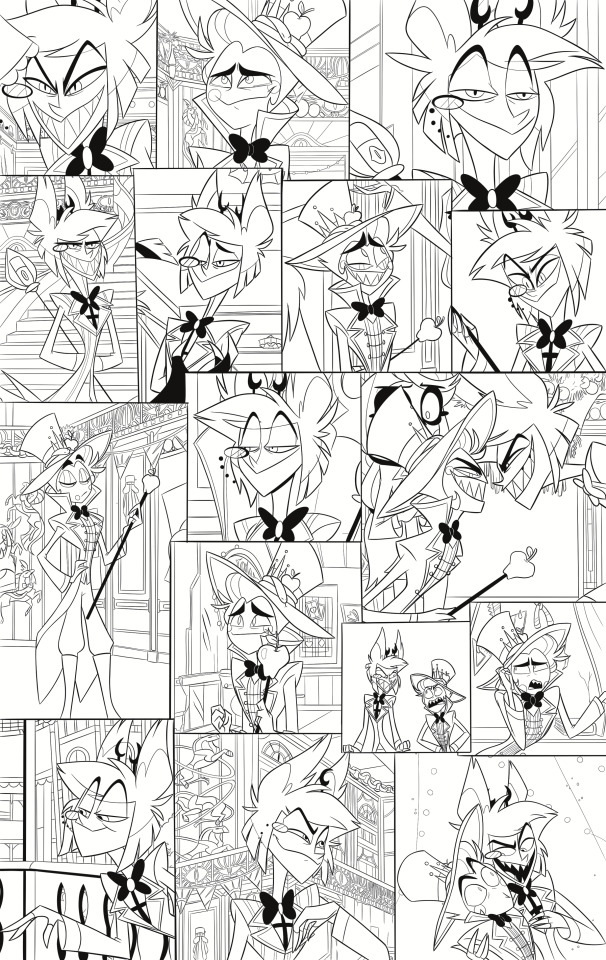
Okay, so, I decided to have a little fun and traced one of the collages I made (posted all of them in a different posts) to both relax and practice line thickness, and HOT DAMN do I have more respect for background artists.
Those details CRUSHED me. But also O.O I noticed so many things in the background that I hadn't before. Like the horse mosaic on the wall, the lions jumping through hoops in the background, how the staircase isn't straight, it's curved, and just how many eye shapes there are in the hotel, damn).
I'm probably ALSO going to use this as a reference, because one can never have too many references, and like with my other ones, anyone is free to snatch this one up too if they want. Something about the absence of color and shadow just...help my brain with the shapes, you know?
#also helped me get a better grasp of how to draw comics#is that weird?#idk but it was very satisfying to do this#I will probably do this to the others in between finishing my Husk drawing guides#my hand is dead now though LMAO#I've been working on this for the past two nights#hazbin hotel#alastor#hazbin alastor#hazbin hotel alastor#the radio demon#lucifer morningstar#lucifer magne#appleradio#lucifer hazbin hotel#lucifer#hazbin hotel lucifer#hazbin lucifer#alastor hazbin hotel#alastor the radio demon#radio demon#drawing reference#drawing guides#drawing guide
550 notes
·
View notes
Note
do you have any good references for bigger body types?
Yes!
I use a fat model tag here on Tumblr.
You can sometimes search by model name in my DA Archive if you know a certain model has a body type you are looking for. Here's a guide to everyone though I'm never tagged by name:
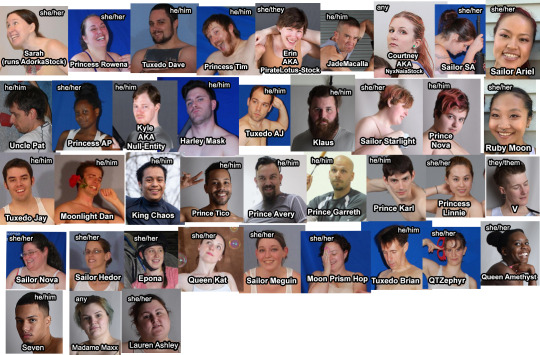
My site gallery has a sort by body type though it's a WIP on how I will label and tag them.
I can also recommend fatphotoref.com which you will need to apply to to access. It's a community based resource run by Ruby so please be patient if you request access. 🥰
Here's a few just to have in this post, too!
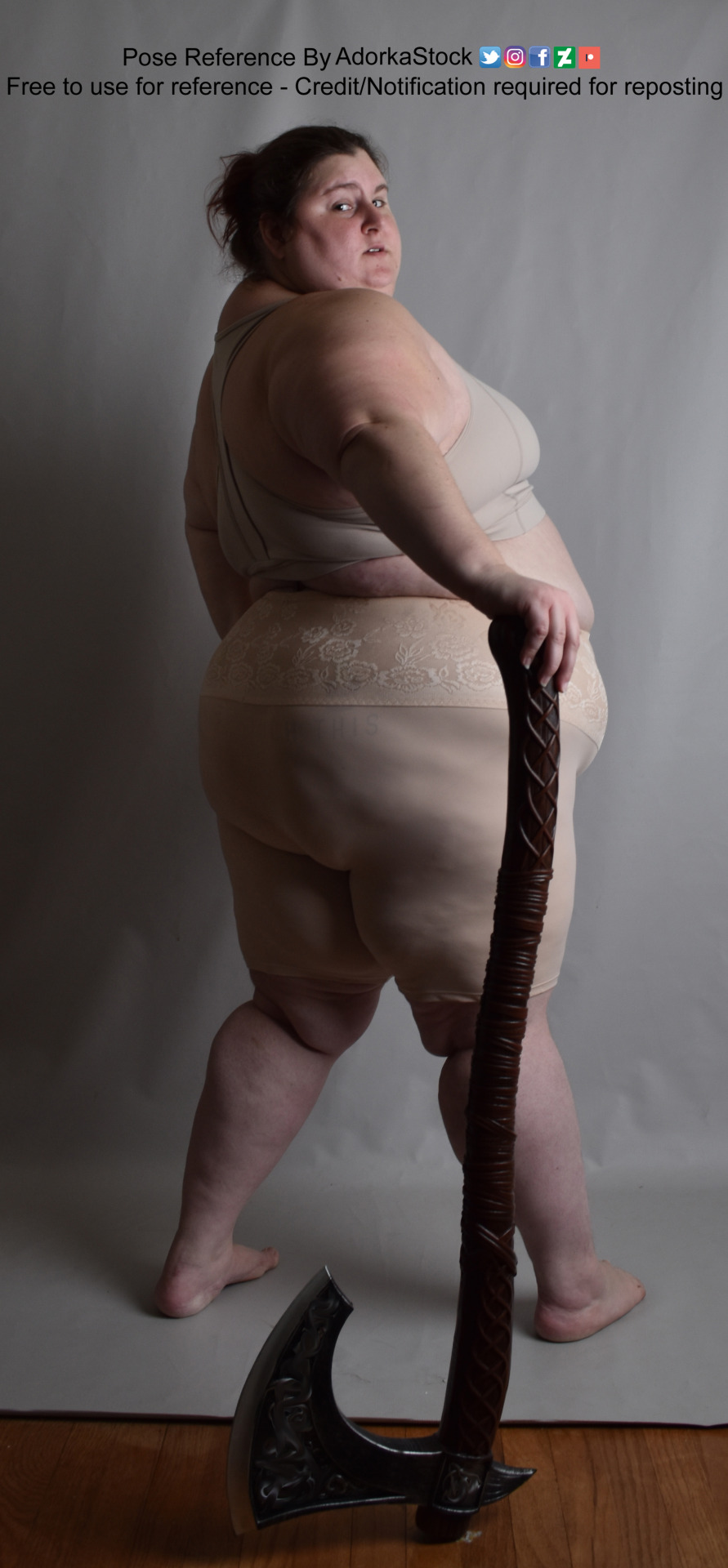


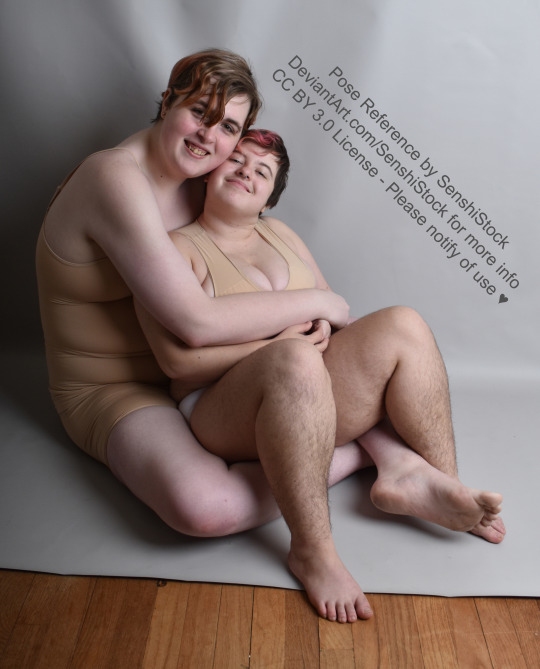

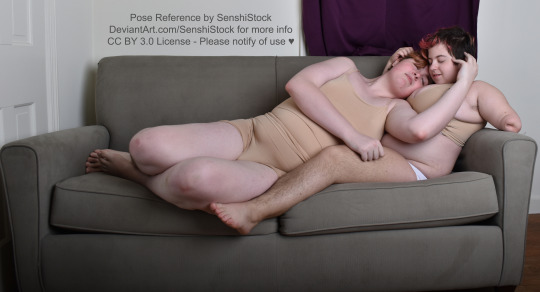

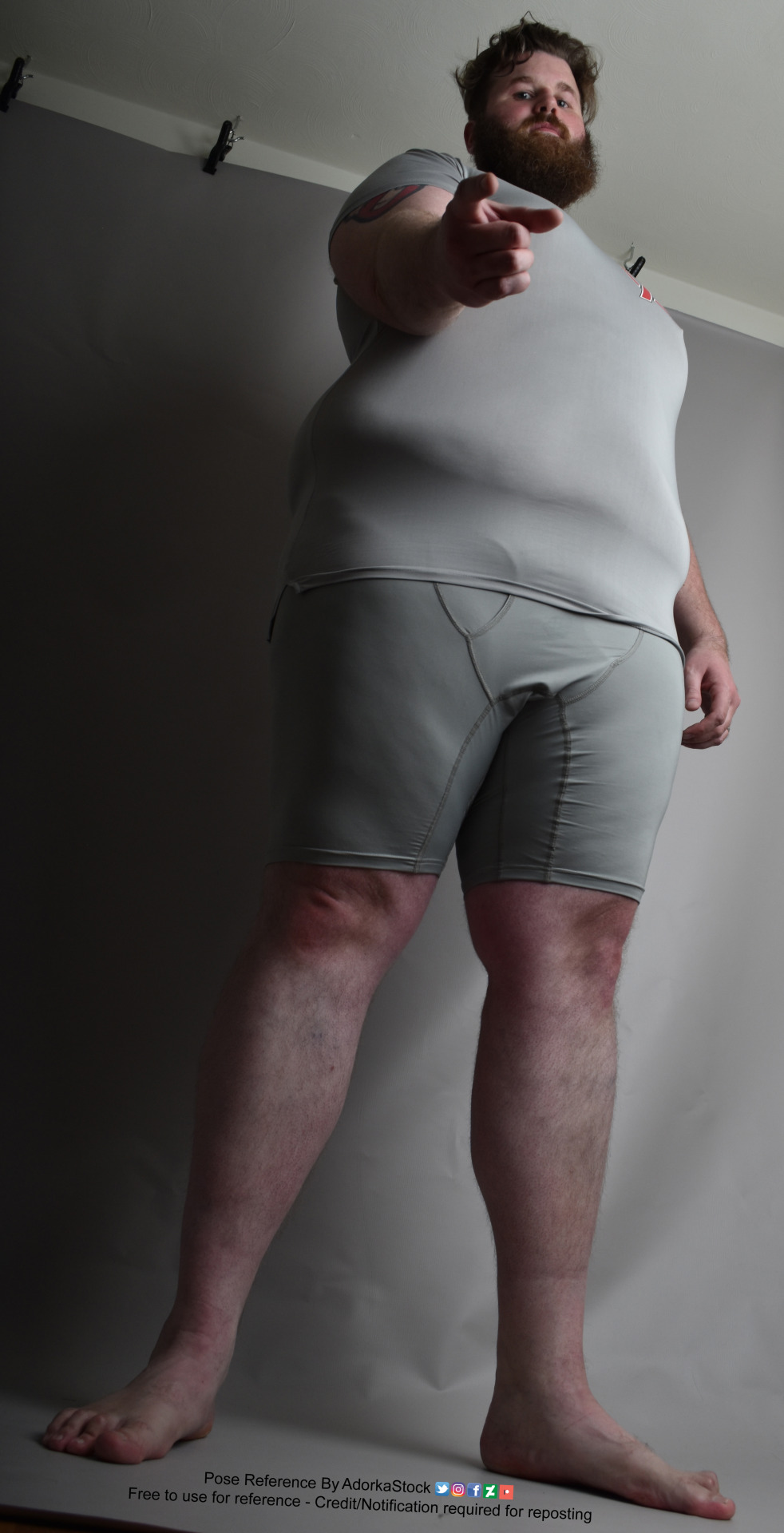




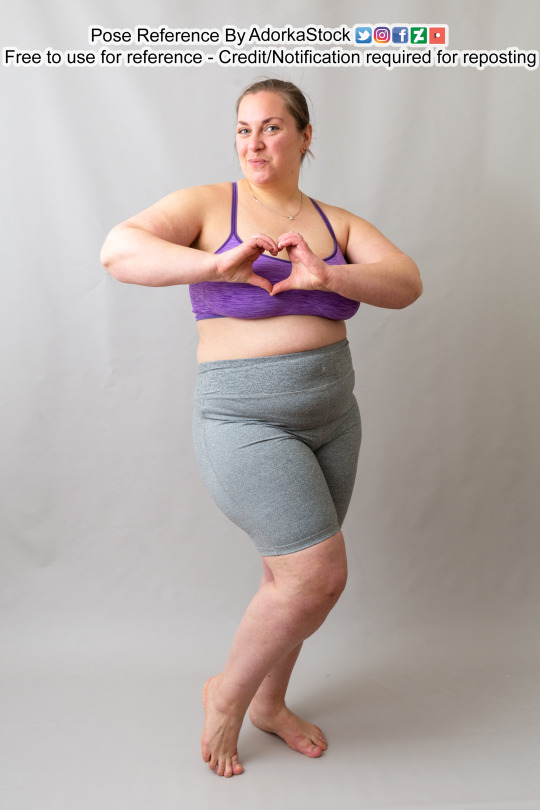
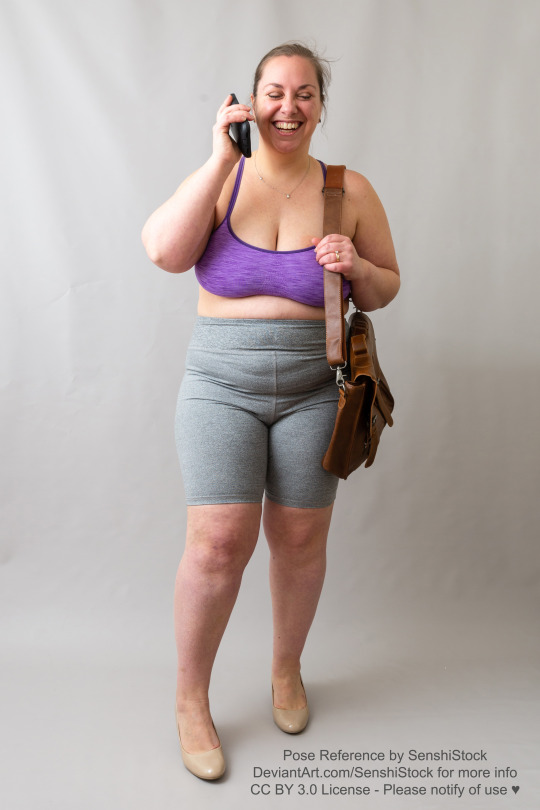



#ask adorkastock#fat model#pose reference#model guide#lauren ashley#Rowena#Klaus#Prince Nova#Starlight#Moon Prism Hop#Queen Kat#Sailor Nova
490 notes
·
View notes
Text
Fantasy Guide to Interiors



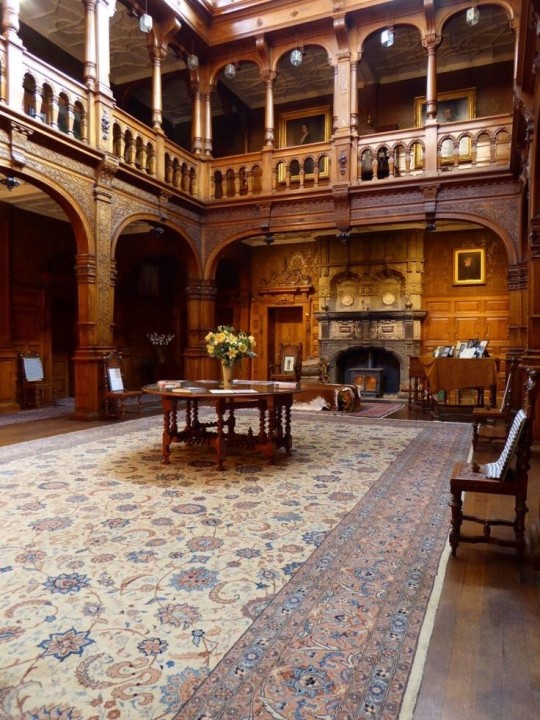
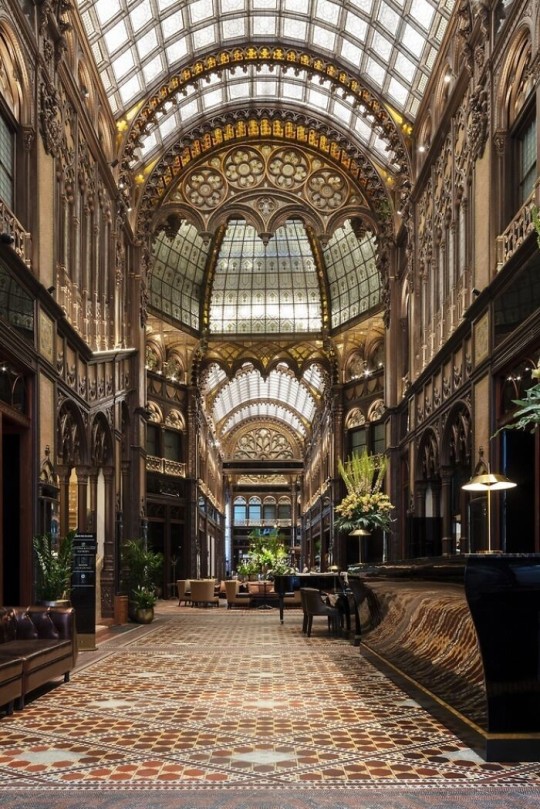
As a followup to the very popular post on architecture, I decided to add onto it by exploring the interior of each movement and the different design techniques and tastes of each era. This post at be helpful for historical fiction, fantasy or just a long read when you're bored.
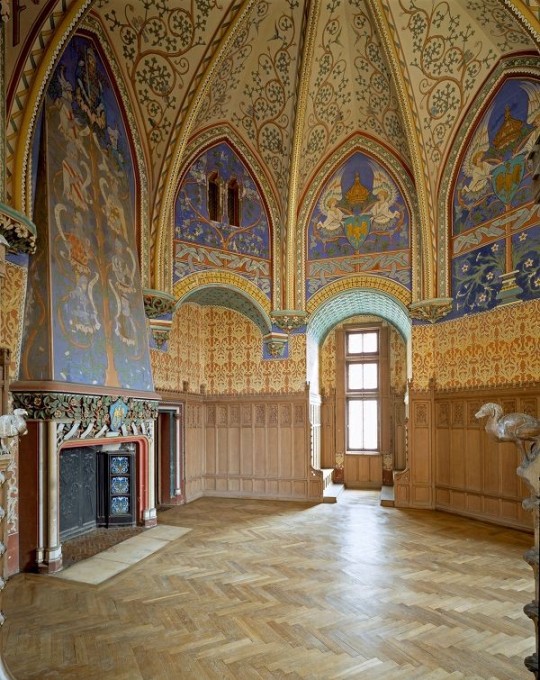


Interior Design Terms
Reeding and fluting: Fluting is a technique that consists a continuous pattern of concave grooves in a flat surface across a surface. Reeding is it's opposite.
Embossing: stamping, carving or moulding a symbol to make it stand out on a surface.
Paneling: Panels of carved wood or fabric a fixed to a wall in a continuous pattern.
Gilding: the use of gold to highlight features.
Glazed Tile: Ceramic or porcelain tiles coated with liquid coloured glass or enamel.
Column: A column is a pillar of stone or wood built to support a ceiling. We will see more of columns later on.
Bay Window: The Bay Window is a window projecting outward from a building.
Frescos: A design element of painting images upon wet plaster.
Mosaic: Mosaics are a design element that involves using pieces of coloured glass and fitted them together upon the floor or wall to form images.
Mouldings: ornate strips of carved wood along the top of a wall.
Wainscoting: paneling along the lower portion of a wall.
Chinoiserie: A European take on East Asian art. Usually seen in wallpaper.
Clerestory: A series of eye-level windows.
Sconces: A light fixture supported on a wall.
Niche: A sunken area within a wall.
Monochromatic: Focusing on a single colour within a scheme.
Ceiling rose: A moulding fashioned on the ceiling in the shape of a rose usually supporting a light fixture.
Baluster: the vertical bars of a railing.
Façade: front portion of a building
Lintel: Top of a door or window.
Portico: a covered structure over a door supported by columns
Eaves: the part of the roof overhanging from the building
Skirting: border around lower length of a wall
Ancient Greece
Houses were made of either sun-dried clay bricks or stone which were painted when they dried. Ground floors were decorated with coloured stones and tiles called Mosaics. Upper level floors were made from wood. Homes were furnished with tapestries and furniture, and in grand homes statues and grand altars would be found. Furniture was very skillfully crafted in Ancient Greece, much attention was paid to the carving and decoration of such things. Of course, Ancient Greece is ancient so I won't be going through all the movements but I will talk a little about columns.
Doric: Doric is the oldest of the orders and some argue it is the simplest. The columns of this style are set close together, without bases and carved with concave curves called flutes. The capitals (the top of the column) are plain often built with a curve at the base called an echinus and are topped by a square at the apex called an abacus. The entablature is marked by frieze of vertical channels/triglyphs. In between the channels would be detail of carved marble. The Parthenon in Athens is your best example of Doric architecture.
Ionic: The Ionic style was used for smaller buildings and the interiors. The columns had twin volutes, scroll-like designs on its capital. Between these scrolls, there was a carved curve known as an egg and in this style the entablature is much narrower and the frieze is thick with carvings. The example of Ionic Architecture is the Temple to Athena Nike at the Athens Acropolis.
Corinthian: The Corinthian style has some similarities with the Ionic order, the bases, entablature and columns almost the same but the capital is more ornate its base, column, and entablature, but its capital is far more ornate, commonly carved with depictions of acanthus leaves. The style was more slender than the others on this list, used less for bearing weight but more for decoration. Corinthian style can be found along the top levels of the Colosseum in Rome.
Tuscan: The Tuscan order shares much with the Doric order, but the columns are un-fluted and smooth. The entablature is far simpler, formed without triglyphs or guttae. The columns are capped with round capitals.
Composite: This style is mixed. It features the volutes of the Ionic order and the capitals of the Corinthian order. The volutes are larger in these columns and often more ornate. The column's capital is rather plain. for the capital, with no consistent differences to that above or below the capital.
Ancient Rome
Rome is well known for its outward architectural styles. However the Romans did know how to add that rizz to the interior. Ceilings were either vaulted or made from exploded beams that could be painted. The Romans were big into design. Moasics were a common interior sight, the use of little pieces of coloured glass or stone to create a larger image. Frescoes were used to add colour to the home, depicting mythical figures and beasts and also different textures such as stonework or brick. The Romans loved their furniture. Dining tables were low and the Romans ate on couches. Weaving was a popular pastime so there would be tapestries and wall hangings in the house. Rich households could even afford to import fine rugs from across the Empire. Glass was also a feature in Roman interior but windows were usually not paned as large panes were hard to make. Doors were usually treated with panels that were carved or in lain with bronze.
Ancient Egypt
Egypt was one of the first great civilisations, known for its immense and grand structures. Wealthy Egyptians had grand homes. The walls were painted or plastered usually with bright colours and hues. The Egyptians are cool because they mapped out their buildings in such a way to adhere to astrological movements meaning on special days if the calendar the temple or monuments were in the right place always. The columns of Egyptian where thicker, more bulbous and often had capitals shaped like bundles of papyrus reeds. Woven mats and tapestries were popular decor. Motifs from the river such as palms, papyrus and reeds were popular symbols used.
Ancient Africa
African Architecture is a very mixed bag and more structurally different and impressive than Hollywood would have you believe. Far beyond the common depictions of primitive buildings, the African nations were among the giants of their time in architecture, no style quite the same as the last but just as breathtaking.
Rwandan Architecture: The Rwandans commonly built of hardened clay with thatched roofs of dried grass or reeds. Mats of woven reeds carpeted the floors of royal abodes. These residences folded about a large public area known as a karubanda and were often so large that they became almost like a maze, connecting different chambers/huts of all kinds of uses be they residential or for other purposes.
Ashanti Architecture: The Ashanti style can be found in present day Ghana. The style incorporates walls of plaster formed of mud and designed with bright paint and buildings with a courtyard at the heart, not unlike another examples on this post. The Ashanti also formed their buildings of the favourite method of wattle and daub.
Nubian Architecture: Nubia, in modern day Ethiopia, was home to the Nubians who were one of the world's most impressive architects at the beginning of the architecture world and probably would be more talked about if it weren't for the Egyptians building monuments only up the road. The Nubians were famous for building the speos, tall tower-like spires carved of stone. The Nubians used a variety of materials and skills to build, for example wattle and daub and mudbrick. The Kingdom of Kush, the people who took over the Nubian Empire was a fan of Egyptian works even if they didn't like them very much. The Kushites began building pyramid-like structures such at the sight of Gebel Barkal
Japanese Interiors
Japenese interior design rests upon 7 principles. Kanso (簡素)- Simplicity, Fukinsei (不均整)- Asymmetry, Shizen (自然)- Natural, Shibumi (渋味) – Simple beauty, Yugen (幽玄)- subtle grace, Datsuzoku (脱俗) – freedom from habitual behaviour, Seijaku (静寂)- tranquillity.
Common features of Japanese Interior Design:
Shoji walls: these are the screens you think of when you think of the traditional Japanese homes. They are made of wooden frames, rice paper and used to partition
Tatami: Tatami mats are used within Japanese households to blanket the floors. They were made of rice straw and rush straw, laid down to cushion the floor.
Genkan: The Genkan was a sunken space between the front door and the rest of the house. This area is meant to separate the home from the outside and is where shoes are discarded before entering.
Japanese furniture: often lowest, close to the ground. These include tables and chairs but often tanked are replaced by zabuton, large cushions. Furniture is usually carved of wood in a minimalist design.
Nature: As both the Shinto and Buddhist beliefs are great influences upon architecture, there is a strong presence of nature with the architecture. Wood is used for this reason and natural light is prevalent with in the home. The orientation is meant to reflect the best view of the world.
Islamic World Interior
The Islamic world has one of the most beautiful and impressive interior design styles across the world. Colour and detail are absolute staples in the movement. Windows are usually not paned with glass but covered in ornate lattices known as jali. The jali give ventilation, light and privacy to the home. Islamic Interiors are ornate and colourful, using coloured ceramic tiles. The upper parts of walls and ceilings are usually flat decorated with arabesques (foliate ornamentation), while the lower wall areas were usually tiled. Features such as honeycombed ceilings, horseshoe arches, stalactite-fringed arches and stalactite vaults (Muqarnas) are prevalent among many famous Islamic buildings such as the Alhambra and the Blue Mosque.
Byzantine (330/395–1453 A. D)
The Byzantine Empire or Eastern Roman Empire was where eat met west, leading to a melting pot of different interior designs based on early Christian styles and Persian influences. Mosaics are probably what you think of when you think of the Byzantine Empire. Ivory was also a popular feature in the Interiors, with carved ivory or the use of it in inlay. The use of gold as a decorative feature usually by way of repoussé (decorating metals by hammering in the design from the backside of the metal). Fabrics from Persia, heavily embroidered and intricately woven along with silks from afar a field as China, would also be used to upholster furniture or be used as wall hangings. The Byzantines favoured natural light, usually from the use of copolas.
Indian Interiors
India is of course, the font of all intricate designs. India's history is sectioned into many eras but we will focus on a few to give you an idea of prevalent techniques and tastes.
The Gupta Empire (320 – 650 CE): The Gupta era was a time of stone carving. As impressive as the outside of these buildings are, the Interiors are just as amazing. Gupta era buildings featured many details such as ogee (circular or horseshoe arch), gavaksha/chandrashala (the motif centred these arches), ashlar masonry (built of squared stone blocks) with ceilings of plain, flat slabs of stone.
Delhi Sultanate (1206–1526): Another period of beautifully carved stone. The Delhi sultanate had influence from the Islamic world, with heavy uses of mosaics, brackets, intricate mouldings, columns and and hypostyle halls.
Mughal Empire (1526–1857): Stonework was also important on the Mughal Empire. Intricately carved stonework was seen in the pillars, low relief panels depicting nature images and jalis (marble screens). Stonework was also decorated in a stye known as pietra dura/parchin kari with inscriptions and geometric designs using colored stones to create images. Tilework was also popular during this period. Moasic tiles were cut and fitted together to create larger patters while cuerda seca tiles were coloured tiles outlined with black.
Chinese Interiors
Common features of Chinese Interiors
Use of Colours: Colour in Chinese Interior is usually vibrant and bold. Red and Black are are traditional colours, meant to bring luck, happiness, power, knowledge and stability to the household.
Latticework: Lattices are a staple in Chinese interiors most often seen on shutters, screens, doors of cabinets snf even traditional beds.
Lacquer: Multiple coats of lacquer are applied to furniture or cabinets (now walls) and then carved. The skill is called Diaoqi (雕漆).
Decorative Screens: Screens are used to partition off part of a room. They are usually of carved wood, pained with very intricate murals.
Shrines: Spaces were reserved on the home to honour ancestors, usually consisting of an altar where offerings could be made.
Of course, Chinese Interiors are not all the same through the different eras. While some details and techniques were interchangeable through different dynasties, usually a dynasty had a notable style or deviation. These aren't all the dynasties of course but a few interesting examples.
Song Dynasty (960–1279): The Song Dynasty is known for its stonework. Sculpture was an important part of Song Dynasty interior. It was in this period than brick and stone work became the most used material. The Song Dynasty was also known for its very intricate attention to detail, paintings, and used tiles.
Ming Dynasty(1368–1644): Ceilings were adorned with cloisons usually featuring yellow reed work. The floors would be of flagstones usually of deep tones, mostly black. The Ming Dynasty favoured richly coloured silk hangings, tapestries and furnishings. Furniture was usually carved of darker woods, arrayed in a certain way to bring peace to the dwelling.
Han Dynasty (206 BC-220 AD): Interior walls were plastered and painted to show important figures and scenes. Lacquer, though it was discovered earlier, came into greater prominence with better skill in this era.
Tang Dynasty (618–907) : The colour palette is restrained, reserved. But the Tang dynasty is not without it's beauty. Earthenware reached it's peak in this era, many homes would display fine examples as well. The Tang dynasty is famous for its upturned eaves, the ceilings supported by timber columns mounted with metal or stone bases. Glazed tiles were popular in this era, either a fixed to the roof or decorating a screen wall.
Romanesque (6th -11th century/12th)
Romanesque Architecture is a span between the end of Roman Empire to the Gothic style. Taking inspiration from the Roman and Byzantine Empires, the Romanesque period incorporates many of the styles. The most common details are carved floral and foliage symbols with the stonework of the Romanesque buildings. Cable mouldings or twisted rope-like carvings would have framed doorways. As per the name, Romansque Interiors relied heavily on its love and admiration for Rome. The Romanesque style uses geometric shapes as statements using curves, circles snf arches. The colours would be clean and warm, focusing on minimal ornamentation.
Gothic Architecture (12th Century - 16th Century)
The Gothic style is what you think of when you think of old European cathedrals and probably one of the beautiful of the styles on this list and one of most recognisable. The Gothic style is a dramatic, opposing sight and one of the easiest to describe. Decoration in this era became more ornate, stonework began to sport carving and modelling in a way it did not before. The ceilings moved away from barreled vaults to quadripartite and sexpartite vaulting. Columns slimmed as other supportive structures were invented. Intricate stained glass windows began their popularity here. In Gothic structures, everything is very symmetrical and even.
Mediaeval (500 AD to 1500)
Interiors of mediaeval homes are not quite as drab as Hollywood likes to make out. Building materials may be hidden by plaster in rich homes, sometimes even painted. Floors were either dirt strewn with rushes or flagstones in larger homes. Stonework was popular, especially around fireplaces. Grand homes would be decorated with intricate woodwork, carved heraldic beasts and wall hangings of fine fabrics.
Renaissance (late 1300s-1600s)
The Renaissance was a period of great artistry and splendor. The revival of old styles injected symmetry and colour into the homes. Frescoes were back. Painted mouldings adorned the ceilings and walls. Furniture became more ornate, fixed with luxurious upholstery and fine carvings. Caryatids (pillars in the shape of women), grotesques, Roman and Greek images were used to spruce up the place. Floors began to become more intricate, with coloured stone and marble. Modelled stucco, sgraffiti arabesques (made by cutting lines through a layer of plaster or stucco to reveal an underlayer), and fine wall painting were used in brilliant combinations in the early part of the 16th century.
Tudor Interior (1485-1603)
The Tudor period is a starkly unique style within England and very recognisable. Windows were fixed with lattice work, usually casement. Stained glass was also in in this period, usually depicting figures and heraldic beasts. Rooms would be panelled with wood or plastered. Walls would be adorned with tapestries or embroidered hangings. Windows and furniture would be furnished with fine fabrics such as brocade. Floors would typically be of wood, sometimes strewn with rush matting mixed with fresh herbs and flowers to freshen the room.
Baroque (1600 to 1750)
The Baroque period was a time for splendor and for splashing the cash. The interior of a baroque room was usually intricate, usually of a light palette, featuring a very high ceiling heavy with detail. Furniture would choke the room, ornately carved and stitched with very high quality fabrics. The rooms would be full of art not limited to just paintings but also sculptures of marble or bronze, large intricate mirrors, moldings along the walls which may be heavily gilded, chandeliers and detailed paneling.
Victorian (1837-1901)
We think of the interiors of Victorian homes as dowdy and dark but that isn't true. The Victorians favoured tapestries, intricate rugs, decorated wallpaper, exquisitely furniture, and surprisingly, bright colour. Dyes were more widely available to people of all stations and the Victorians did not want for colour. Patterns and details were usually nature inspired, usually floral or vines. Walls could also be painted to mimic a building material such as wood or marble and most likely painted in rich tones. The Victorians were suckers for furniture, preferring them grandly carved with fine fabric usually embroidered or buttoned. And they did not believe in minimalism. If you could fit another piece of furniture in a room, it was going in there. Floors were almost eclusively wood laid with the previously mentioned rugs. But the Victorians did enjoy tiled floors but restricted them to entrances. The Victorians were quite in touch with their green thumbs so expect a lot of flowers and greenery inside. with various elaborately decorated patterned rugs. And remember, the Victorians loved to display as much wealth as they could. Every shelf, cabinet, case and ledge would be chocked full of ornaments and antiques.
Edwardian/The Gilded Age/Belle Epoque (1880s-1914)
This period (I've lumped them together for simplicity) began to move away from the deep tones and ornate patterns of the Victorian period. Colour became more neutral. Nature still had a place in design. Stained glass began to become popular, especially on lampshades and light fixtures. Embossing started to gain popularity and tile work began to expand from the entrance halls to other parts of the house. Furniture began to move away from dark wood, some families favouring breathable woods like wicker. The rooms would be less cluttered.
Art Deco (1920s-1930s)
The 1920s was a time of buzz and change. Gone were the refined tastes of the pre-war era and now the wow factor was in. Walls were smoother, buildings were sharper and more jagged, doorways and windows were decorated with reeding and fluting. Pastels were in, as was the heavy use of black and white, along with gold. Mirrors and glass were in, injecting light into rooms. Gold, silver, steel and chrome were used in furnishings and decor. Geometric shapes were a favourite design choice. Again, high quality and bold fabrics were used such as animal skins or colourful velvet. It was all a rejection of the Art Noveau movement, away from nature focusing on the man made.
Modernism (1930 - 1965)
Modernism came after the Art Deco movement. Fuss and feathers were out the door and now, practicality was in. Materials used are shown as they are, wood is not painted, metal is not coated. Bright colours were acceptable but neutral palettes were favoured. Interiors were open and favoured large windows. Furniture was practical, for use rather than the ornamentation, featuring plain details of any and geometric shapes. Away from Art Deco, everything is straight, linear and streamlined.
#This took forever#I'm very tired#But enjoy#I covered as much as I could find#Fantasy Guide to interiors#interior design#Architecture#writings#writing resources#Writing reference#Writing advice#Writer's research#writing research#Writer's rescources#Writing help#Mediaeval#Renaissance#Chinese Interiors#Japanese Interiors#Indian interiors#writing#writeblr#writing reference#writing advice#writer#spilled words#writers
3K notes
·
View notes
Text
25 Prose Tips For Writers 🖋️✨ Part 1
Hey there!📚✨
As writers, we all know that feeling when we read a sentence so beautifully crafted that it takes our breath away. We pause, reread it, and marvel at how the author managed to string those words together in such a captivating way. Well, today I'm going to unpack a few secrets to creating that same magic in your own writing. These same tips I use in my writing.
But before I begin, please remember that writing is an art form, and like any art, it's subjective. What sounds beautiful to one person might not resonate with another. The tips I'm about to share are meant to be tools in your writer's toolkit, not rigid rules. Feel free to experiment, play around, and find what works best for your unique voice and style.
Power of Rhythm 🎵
One of the most overlooked aspects of beautiful prose is rhythm. Just like music, writing has a flow and cadence that can make it pleasing to the ear (or mind's ear, in this case). Here are some ways to incorporate rhythm into your writing:
a) Vary your sentence length: Mix short, punchy sentences with longer, flowing ones. This creates a natural ebb and flow that keeps your reader engaged.
Example:
"The sun set. Darkness crept in, wrapping the world in its velvet embrace. Stars winked to life, one by one, until the sky was a glittering tapestry of light."
b) Use repetition strategically: Repeating words or phrases can create a hypnotic effect and emphasize important points.
Example:
"She walked through the forest, through the shadows, through the whispers of ancient trees. Through it all, she walked with purpose."
c) Pay attention to the stressed syllables: In English, we naturally stress certain syllables in words. Try to end important sentences with stressed syllables for a stronger impact.
Example:
"Her heart raced as she approached the door." (Stronger ending)
vs.
"She approached the door as her heart raced." (Weaker ending)
Paint with Words 🎨
Beautiful prose often creates vivid imagery in the reader's mind. Here are some techniques to help you paint with words:
a) Use specific, concrete details: Instead of general descriptions, zoom in on particular details that bring a scene to life.
Example:
Instead of: "The room was messy."
Try: "Crumpled papers overflowed from the waste bin, books lay spine-up on every surface, and a half-eaten sandwich peeked out from under a stack of wrinkled clothes."
b) Appeal to all five senses: Don't just describe what things look like. Include smells, sounds, textures, and tastes to create a fully immersive experience.
Example:
"The market bustled with life. Colorful fruits glistened in the morning sun, their sweet aroma mingling with the earthy scent of fresh herbs. Vendors called out their wares in sing-song voices, while customers haggled in animated tones. Sarah's fingers brushed against the rough burlap sacks of grain as she passed, and she could almost taste the tang of ripe oranges on her tongue."
c) Use unexpected comparisons: Fresh similes and metaphors can breathe new life into descriptions.
Example:
Instead of: "The old man was very thin."
Try: "The old man was a whisper of his former self, as if life had slowly erased him, leaving behind only the faintest outline."
Choose Your Words Wisely 📚
Every word in your prose should earn its place. Here are some tips for selecting the right words:
a) Embrace strong verbs: Replace weak verb + adverb combinations with single, powerful verbs.
Example:
Instead of: "She walked quickly to the store."
Try: "She hurried to the store." or "She dashed to the store."
b) Be specific: Use precise nouns instead of general ones.
Example:
Instead of: "She picked up the flower."
Try: "She plucked the daisy."
c) Avoid clichés: Clichés can make your writing feel stale. Try to find fresh ways to express common ideas.
Example:
Instead of: "It was raining cats and dogs."
Try: "The rain fell in sheets, transforming the streets into rushing rivers."
Play with Sound 🎶
The sound of words can contribute greatly to the beauty of your prose. Here are some techniques to make your writing more musical:
a) Alliteration: Repeating initial consonant sounds can create a pleasing effect.
Example: "She sells seashells by the seashore."
b) Assonance: Repeating vowel sounds can add a subtle musicality to your prose.
Example: "The light of the bright sky might ignite a fight."
c) Onomatopoeia: Using words that sound like what they describe can make your writing more immersive.
Example: "The bees buzzed and hummed as they flitted from flower to flower."
Art of Sentence Structure 🏗️
How you structure your sentences can greatly affect the flow and impact of your prose. Here are some tips:
a) Use parallel structure: When listing items or actions, keep the grammatical structure consistent.
Example:
"She came, she saw, she conquered."
b) Try periodic sentences: Build suspense by putting the main clause at the end of the sentence.
Example:
"Through storm and strife, across oceans and continents, despite all odds and obstacles, they persevered."
c) Experiment with sentence fragments: While not grammatically correct, sentence fragments can be powerful when used intentionally for emphasis or style.
Example:
"She stood at the edge of the cliff. Heart racing. Palms sweating. Ready to jump."
Power of White Space ⬜
Sometimes, what you don't say is just as important as what you do. Use paragraph breaks and short sentences to create pauses and emphasize important moments.
Example:
"He opened the letter with trembling hands.
Inside, a single word.
'Yes.'"
Read Your Work Aloud 🗣️
One of the best ways to polish your prose is to read it aloud. This helps you catch awkward phrasing, repetitive words, and rhythm issues that you might miss when reading silently.
Edit Ruthlessly ✂️
Beautiful prose often comes from rigorous editing. Don't be afraid to cut words, sentences, or even entire paragraphs if they don't serve the overall beauty and effectiveness of your writing.
Study the Masters 📖
Please! Read widely and pay attention to how your favorite authors craft their prose. Analyze sentences you find particularly beautiful and try to understand what makes them work.
Practice, Practice, Practice 💪
Like any skill, writing beautiful prose takes practice. Set aside time to experiment with different techniques and styles. Try writing exercises focused on specific aspects of prose, like describing a scene using only sound words, or rewriting a simple sentence in ten different ways.
Remember, that developing your prose style is a journey, not a destination. It's okay if your first draft isn't perfect – that's what editing is for! The most important thing is to keep writing, keep experimenting, and keep finding joy in the process.
Here are a few more unique tips to help you on your prose-perfecting journey:
Create a Word Bank 🏦
Keep a notebook or digital file where you collect beautiful words, phrases, or sentences you come across in your reading. This can be a great resource when you're looking for inspiration or the perfect word to complete a sentence.
Use the "Rule of Three" 3️⃣
There's something inherently satisfying about groups of three. Use this to your advantage in your writing, whether it's in listing items, repeating phrases, or structuring your paragraphs.
Example:
"The old house groaned, creaked, and whispered its secrets to the night."
Power of Silence 🤫
Sometimes, the most powerful prose comes from what's left unsaid. Use implication and subtext to add depth to your writing.
Example:
Instead of: "She was heartbroken when he left."
Try: "She stared at his empty chair across the breakfast table, the untouched coffee growing cold."
Play with Perspective 👁️
Experiment with different points of view to find the most impactful way to tell your story. Sometimes, an unexpected perspective can make your prose truly memorable.
Example:
Instead of describing a bustling city from a human perspective, try describing it from the point of view of a bird soaring overhead, or a coin passed from hand to hand.
Use Punctuation Creatively 🖋️
While it's important to use punctuation correctly, don't be afraid to bend the rules a little for stylistic effect. Em dashes, ellipses, and even unconventional use of periods can add rhythm and emphasis to your prose.
Example:
"She hesitated—heart pounding, palms sweating—then knocked on the door."
Create Contrast 🌓
Juxtapose different elements in your writing to create interest and emphasis. This can be in terms of tone, pacing, or even the literal elements you're describing.
Example:
"The delicate butterfly alighted on the rusted barrel of the abandoned tank."
Use Synesthesia 🌈
Synesthesia is a condition where one sensory experience triggers another. While not everyone experiences this, using synesthetic descriptions in your writing can create vivid and unique imagery.
Example:
"The violin's melody tasted like honey on her tongue."
Experiment with Sentence Diagrams 📊
Remember those sentence diagrams from school? Try diagramming some of your favorite sentences from literature. This can give you insight into how complex sentences are structured and help you craft your own.
Create a Sensory Tour 🚶♀️
When describing a setting, try taking your reader on a sensory tour. Move from one sense to another, creating a full, immersive experience.
Example:
"The old bookstore welcomed her with the musty scent of aging paper. Dust motes danced in the shafts of sunlight piercing the high windows. Her fingers trailed over the cracked leather spines as she moved deeper into the stacks, the floorboards creaking a greeting beneath her feet. In the distance, she could hear the soft ticking of an ancient clock and taste the faint bitterness of old coffee in the air."
Use Active Voice (Most of the Time) 🏃♂️
While passive voice has its place, active voice generally creates more dynamic and engaging prose. Compare these two sentences:
Passive: "The ball was thrown by the boy."
Active: "The boy threw the ball."
Magic of Ordinary Moments ✨
Sometimes, the most beautiful prose comes from describing everyday occurrences in a new light. Challenge yourself to find beauty and meaning in the mundane.
Example:
"The kettle's whistle pierced the quiet morning, a clarion call heralding the day's first cup of possibility."
Play with Time ⏳
Experiment with how you present the passage of time in your prose. You can stretch a moment out over several paragraphs or compress years into a single sentence.
Example:
"In that heartbeat between his question and her answer, universes were born and died, civilizations rose and fell, and their entire future hung in the balance."
Use Anaphora for Emphasis 🔁
Anaphora is the repetition of a word or phrase at the beginning of successive clauses or sentences. It can create a powerful rhythm and emphasize key points.
Example:
"She was the sunrise after the longest night. She was the first bloom of spring after a harsh winter. She was the cool breeze on a sweltering summer day. She was hope personified, walking among us."
Create Word Pictures 🖼️
Try to create images that linger in the reader's mind long after they've finished reading. These don't have to be elaborate – sometimes a simple, unexpected combination of words can be incredibly powerful.
Example:
"Her laughter was a flock of birds taking flight."
Use Rhetorical Devices 🎭
Familiarize yourself with rhetorical devices like chiasmus, antithesis, and oxymoron. These can add depth and interest to your prose.
Example of chiasmus:
"Ask not what your country can do for you – ask what you can do for your country." - John F. Kennedy
Even the most accomplished authors continue to hone their craft with each new piece they write. Don't be discouraged if your first attempts don't sound exactly like you imagined – keep practicing, keep experimenting, and most importantly, keep writing.
Your unique voice and perspective are what will ultimately make your prose beautiful. These techniques are simply tools to help you express that voice more effectively. Use them, adapt them, or discard them as you see fit. The most important thing is to write in a way that feels authentic to you and brings you joy.
Happy writing, everyone! 🖋️💖📚 - Rin T
Hey fellow writers! I'm super excited to share that I've just launched a Tumblr community. I'm inviting all of you to join my community. All you have to do is fill out this Google form, and I'll personally send you an invitation to join the Write Right Society on Tumblr! Can't wait to see your posts!
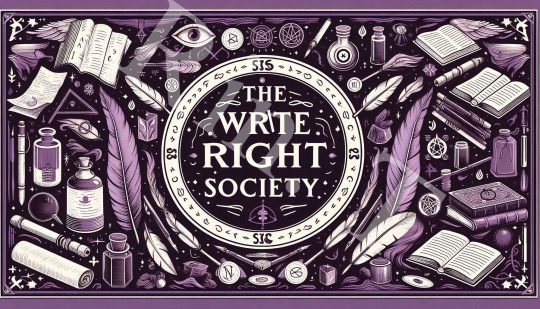
#writing tips#on writing#creative writing#writers block#writing#how to write#thewriteadviceforwriters#writers and poets#writers on tumblr#writeblr#aspiring author#author#book writing#indie author#writer#indie writer#authors of tumblr#fiction writing#writing a book#writing advice#writing blog#writing community#writing guide#writing help#writing characters#writing ideas#writing inspiration#novel writing#romance writing#writing reference
2K notes
·
View notes
Text
= PROJECT MOON LORE GUIDE =
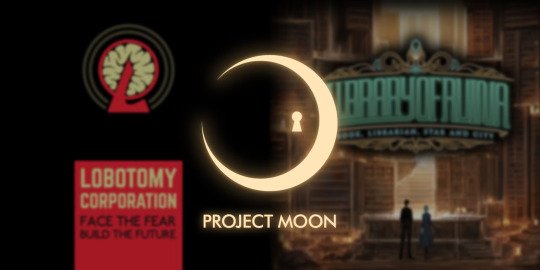
(I've posted a guide like this on Steam, but I figure it couldn't hurt to put an updated version on Tumblr, too. Also, a warning: This post is going to be very, *very* long.)
Hello, current Project Moon fandom and future/want-to-be fans!
Do you enjoy Limbus Company but don't know how to get into the other games and media to appreciate the greater lore of the series? Do you not actually have the money, time, or patience to endure a brutally punishing (and sometimes even janky) roguelike management sim, deckbuilder, or gacha game because we live in a capitalistic hellworld like the one this very series criticizes? Struggle with getting access to supplementary materials due to controversies and language barriers?

(Pictured: PM Twitter and the Limbus Steam Forums, on any given day. Seriously, what is wrong with some of you people.)
And especially important: hate how Reddit and Steam are full of dudebro coomers who are openly hostile to F2P, non-day one players who might grapple with all the previous issues on top of being more invested in story than waifus?
Then read on under the cut!
= o = o = o = o = o = o =
This guide contains a comprehensive list of resources for you to be able to enjoy the Project Moon series to its fullest, including links to wikis, playlists, and more. Even if you can't play the games, I personally think those who can actually appreciate the series shouldn't be gatekept from the truly fantastic story and world that the games hold. Except Canto 6, we don't talk about Canto 6.
AND AN IMPORTANT REMINDER: THERE WILL BE SOME SPOILERS FOR CERTAIN PARTS OF THE SERIES, AND PLEASE ACKNOWLEDGE THE CONTENT WARNINGS BEFORE YOU GET INTO ANYTHING HERE! This is a very dark series that tackles and shows very heavy topics and content!

For those who can't read the text on the image, some of the common trigger warnings for this series includes:
Animal Cruelty
Drug Use
References to Alcohol and Tobacco
Injury and Dismemberment
Homicide and Suicide
Violence and Torture
Cannibalism
Kidnapping, Abduction, and Captivity
Psychosis
Diseases, Seizure, and Dyspnoea (aka shortness of breath)
Familial Homicide and Domestic Violence
Reference to Clowns (Coulrophobia)
Themes of Occultism and Spiritualism
Audiovisual Depictions of Gore
Uses of Sharp and Pointed Objects
Hospital and Medical References
References to Gaslighting and Bullying
Body Modification and/or Deformation
Flashing Lights (Photosensitivity)
Disorientation Induced by a Shaking Camera
Strong Language and Demeaning Words
Reference to Traffic Accidents
Uses of Guns and Instruments of Violence
Discriminatory Violence
Religious Torture and Violence
Enforced Ideology and/or Actions
War and Mass Conflict
Anyway, if all that didn't scare you off, on to the guide!
= o = o = o = o = o = o =
=WIKIS:
When in doubt, there's always the wikis for being references and useful sources, from gameplay to story elements!
>>Cogitopedia - A WIP wiki run by members of the community, working on adding in-depth content for all of the games and supplementary materials.
>>LobCorp Wiki - Has data on every abnormality, including inaccessible ones and cut ones (such as Price of Silence).
>>Library of Ruina Wiki - Has the lore from key pages, and also has cut content like the CGs from the original planned ending.
>>Limbus Wiki.gg - Has ID Uptie stories and info about Mirror Dungeon encounters. (DO NOT USE THE LIMBUS FANDOM WIKI, IT HAS BEEN ABANDONED/VANDALIZED.)
>>Library of Project Moon - A WIP fan blog whose purpose is to consolidate translations of the literary source novels and related works for Limbus Company and the PM games as a whole.
= o = o = o = o = o = o =
=LOBOTOMY CORPORATION:
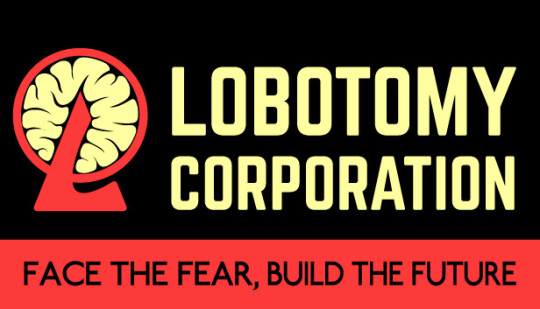
Summary: Lobotomy Corporation is the first game in the series. It is a roguelike management sim where you play as "Manager X", tasked with handling employees and various monsters known as Abnormalities in order to generate daily quotas of a power source substance known as Enkephalin and a mysterious "Seed of Light" project. You are aided by an alleged team of AIs known as the Sephirot, and your very own personal assistant AI, Angela. It's often been likened to "anime SCP Foundation."
This is the game where everything begins, and without it, we wouldn't have the plot of Limbus (or anything else for that matter). This is where the Golden Boughs come from, this is where Abnormalities come from, this is even where Distortions come from - but we're getting ahead of ourselves on that front.
>>This playlist will allow you to watch all the cutscenes from the game, in order, for the canon ending.
>>This video also has the cutscenes, albeit not in order, HOWEVER, it does have the alternate, non-canon endings A and B (which are timestamped in the link for convenience).
youtube
>>WordsmithVids (also on YouTube) also has what is generally considered to be the most popular summary of the game.
youtube
(NOTE: Some people disagree with WordsmithVids and his interpretations of some of the characters as well as his content being "meme-y," so I advise you to watch at your own discretion and draw your own conclusions. That being said, if people have better recommendations, please send them to me instead of just complaining and bitching without offering solutions like that one guy on Steam did, thank you.)
= o = o = o = o = o = o =
=WONDERLAB:
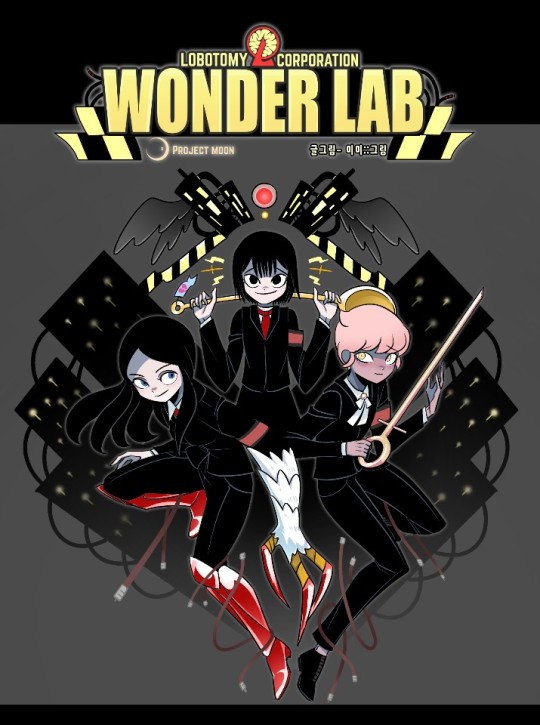
Summary: Wonderlab was a webcomic by the artist MIMI/Whitezombies, originally posted on the Project Moon Postype account. It follows the adventures of several employees - often called "nuggets" in fan parlance - Catt, Taii, and Rose, in a Lobotomy Corporation branch facility as they go about their day to day activities.
This webcomic was taken down after the Summer 2023 Incel Controversy, when incels stormed the Project Moon office in Korea and made enough credible threats that the former Limbus CG artist known as Vellmori was fired, and it is currently part of a second conflict over copyright. However, primarily for archival and personal reference purposes, the comic has been saved and rehosted in several forms.
>>Internet Archive version. This has just the comic in an on-site readable format.
>>A backup archive on Google Drive. This features the individual pages, a downloadable .zip of the archive, and a readable Google Docs version.
For those who may have ethical concerns about downloading a webcomic that was pulled due to controversy (understandable), once again, >>WordsmithVids has a summary.
youtube
(NOTE: This is NOT the place to discuss either the Summer 2023 incel controversy *or* the current (Summer 2024) copyright conflict. There are far better places to do that with people who are far better informed on the topic than I am. This post is solely for providing references and archives of lore material to help guide people into this series. DO NOT attempt to bring up the controversies here, I will not be acknowledging them outside of mentioning why certain supplementary materials may have been pulled and have had to be mirrored. I am just an archivist, not a lawyer or discourser.)
= o = o = o = o = o = o =
=LIBRARY OF RUINA:
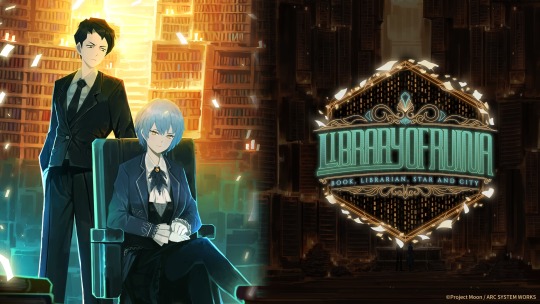
Summary: Library of Ruina takes place some months after the events of Lobotomy Corporation. A "Grade 9 Fixer" known as Roland finds his way into the mysterious, tower-like Library that has sprung up in place of the former main facility of L Corp, where he encounters Angela and the other Sephirot (all now Librarians). He begins assisting her in finding "the perfect book", which involves enticing people to come to the library through the sending out of curious invitations.
Now, unfortunately, there is not a playlist that splits up the cutscenes or puts them in order for Ruina.
>>These two videos have them all in compilation.
youtube
youtube
HOWEVER. A wonderful and dear friend of mine (@citroncynique <3) has allowed the guide they sent me to be reproduced/copied.
>>As such, there is a guide on how to watch the cutscenes in the order that makes the most sense, utilizing the timestamps of the previous two videos. It is not a perfect system, but it works at least.
>>WordsmithVids also has at least two summary vids out.
youtube
youtube
However, due to financial issues at last update, he has not been able to continue his summary of Ruina. I am including them regardless.
>>As well as his Patreon in case people want to support him in hopes of making it easier for him to work on the vids again.
>>There is also an almost FOUR HOUR LONG video essay that delves into Angela's character specifically after the events of LobCorp and Ruina. It is not required viewing like the rest of the materials here, however, I think it still deserves a mention just for the amount of effort and care that went into it.
youtube
= o = o = o = o = o = o =
=DISTORTION DETECTIVE:

Summary: Taking place at roughly the same time as Library of Ruina, two Fixers known as Ezra and Moses and an N Corp. Taboo Hunter known as Vespa investigate the Distortion Phenomenon that is rapidly starting to spread across the City after the events of the previous games.
Originally released as a webnovel on Project Moon's Postype, Distortion Detective has 42 chapters and is technically incomplete/on hiatus. Project Moon, surprised at how popular the webnovel was, decided they wanted to potentially make an entire game based on the story. As of this writing, that has not happened (yet) but at least one character from the novel has appeared in Limbus Company, so there is still hope yet.
>>The DD series in its original form on Postype. This version was posted chapter-by-chapter, on Project Moon's Postype account and is (as of this writing, at least) still readable there.
>>A backup archive on Google Drive. This has the entire webnovel in a single document format (both Docs and downloadable PDF) featuring NishikujiC's official chapter illustrations up to Ch. 26, and includes the now-cut comic adaption of Ch. 19 by the artist Monggeu/koug99.
= o = o = o = o = o = o =
=LEVIATHAN:

(Lord, this one. Like it wasn't a big enough pain in the ass already.)
Summary: After the events of Library of Ruina, and operating as a direct prequel to Limbus Company, Leviathan follows the Color Fixer Vergilius (aka the Red Gaze) as he grapples with his own personal traumas and comes into conflict with the Ring Syndicate, before being recruited as a guide for the LCB.
Leviathan originally started as a webcomic by Monggeu/koug99. Health issues with the artist resulted in the comic being discontinued and turned into a webnovel, whose translation was never completed and had to later be finished by fans. The comic portion has since been taken down as of the Summer 2024 copyright conflict and controversy, much like Wonderlab was. Once again, however, this has been mirrored for archival and reference purposes.
>>Original source of Leviathan on Postype. Due to the copyright conflict and the translation hiatus, the only chapters available are Ch. 12-15. The link is still included for posterity reasons and just in case the copyright conflict results in the chapters being restored.
>>A backup archive on Google Drive. This link includes the comic chapters, as well as the SnakeskinFS English fan translations for the last five chapters that were never completed, all in PDF form.
= o = o = o = o = o = o =
=LIMBUS COMPANY:

Summary: After all the events of the previous games, a mysterious up and coming business known as Limbus Company has taken it upon themselves to send a group composed of 12 "Sinners" and their mysterious clock-headed Manager Dante to delve into the now-abandoned L Corp facilities in search of mysterious artifacts known as Golden Boughs.
Finally we come to the end of the shrubbery maze. Limbus Company is the latest chapter in the currently unfolding story of Project Moon and the City, a gacha game being used to fund other projects under the company umbrella.
Many people, once again, have ethical concerns about patronizing a gacha game. I for one agree with them, even as one of those patrons.
>>This playlist features all of the cutscenes for each part of the game story released so far (up to Intervallo 6.5-2/Murder on the WARP Express as of this writing).
>>There is also this site, which operates as a pure datamined text archive of all the story content.
= o = o = o = o = o = o =
=BONUS/SUPPLEMENTARY:

This section, liable to be updated at any given time, is for links to materials or fan-creations that don't necessarily fit with the strictly canonical story materials found in the games and webnovels themselves but which otherwise provide useful resources or analysis. Note that the vast majority of material here is supplementary and not required, but recommended.
(Except the literary sources. You will read those, and that is a threat. I can't take another Wings-forsaken illiterate opinion on Canto 6, I'm going to start Distorting and biting people if YOU PEOPLE DON'T READ THE DAMN SOURCE NOVELS.)
YouTubers and Video Essayists:
Frey Chaqma - Frey has done lots of work for the PM community, such as spearheading the Absolute Pride Resonance charity event for Pride Month 2024 as well as discussing the lore of the games and the City as a whole.
Tsunul - Another YouTuber who discusses lore but who also often delves into more interpersonal matters relating to the fandom and controversies that can affect the game community as a whole.
Esgoo - Although Esgoo does not necessarily get into lore so much, they are often tauted as one of the biggest names in the fandom for, if nothing else, their meta-analysis and basic gameplay/strategy material, as well as their community involvement.
hydrojoy's essay on Benjamin - in addition to Angela, hydrojoy also did an in-depth analysis on Benjamin, aka B, aka Hokma, from Lobotomy Corporation and Library of Ruina and their impact on the story.
MetiNotTheBadGuy's PM Character Essays - Meti has done several excellent character breakdown videos on some of PM's most notable villains/characters, including Roland, Kromer, and Dongrang.
= o = o = o = o = o = o =
=ACKNOWLEDGEMENTS:
Citroncynique. For being a truly amazing artist, putting in the effort of making a watch guide for Ruina's cutscenes, and getting me into this series and ruining my life forever by jingling a bugman with PTSD in front of me (<3).
MIMI/Whitezombies, Monggeu/koug99, NishikujiC, and Vellmori. Although several of these artists have left PM and the community on bad terms, I still think their efforts should be appreciated and supported, now more than ever.
SnakeskinFS. For finishing Leviathan's English translation.
Folex, Bek, WordsmithVids, hydrojoy, and the Lobotomy Corporation Archive. For posting their cutscene and summary/analysis videos.
NeedsMoreDoge. The Steam user who provided the original guide and backup on how to read Leviathan that I myself utilized.
The less than pleasant members of the community who spurred me into making this guide in the first place, out of pure spite.
And of course, readers like you and those members of the community who make me so happy to be here and be a part of this fandom. Genuinely, thank you all, I have never felt as welcomed as I do in the Project Moon circles I run in.
In addition to the references included here, I recommend you get involved in your PM community as well! Join communities and Discords, support content creators on social sites, help contribute where it's needed and in whatever way you can! The best way to counteract the worst elements of any fandom is to be a guiding and helpful element in your own right.
Thank you all for reading, and I hope this guide helps you out!
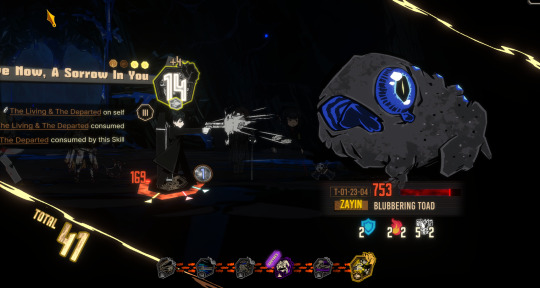
#Project Moon#Lobotomy Corporation#Lob Corp#LobCorp#Library of Ruina#Limbus Company#lore guide#references#reference guide#croak.txt#ONCE AGAIN IF YOU HAVE RECOMMENDATIONS: PLEASE LET ME KNOW#the ones listed are the ones that I simply could personally verify#especially do this if you can recommend YouTubers#as I do not really consume YouTube content and I already had one person yell at me for it
235 notes
·
View notes
Text
Media Representation and Writing Characters with Facial Differences
[Large Text: Media Representation and Writing Characters with Facial Differences]
A writing (?) guide (?) consisting of an explanation of what facial differences are, some basics about the community of people with facial differences, a terminology guide that is extremely subjective, a very long explanation of the real-life effects of misrepresentation of facial differences, a subjective guide on why most tropes surrounding facial differences are awful and unoriginal, and the part that people actually want to see (I hope at least) AKA "types of characters I do actually want to see". As always, this post is meant for people who have no experience with the subject, and not in any way an attempt to tell writers with facial differences on what to do in their own writing.
What Does "Facial Difference" Mean?
[Large Text: What Does "Facial Difference" Mean?]
"Facial Difference" (FD for short) is an umbrella term for any kind of scar, mark, or condition that makes your face visibly different. This encompasses anything from not having parts of the face or having less of them (e.g. anophthalmia, anotia, hemifacial microsomia), having "more" to the face (e.g. tumors, neurofibromatosis), conditions affecting how the face moves (e.g. facial paralysis, ptosis, cranial nerve diseases), ocular differences (e.g. hypertelorism, nystagmus, strabismus), conditions affecting the colors of the face (e.g. rosacea, vitiligo, pigmentation conditions in general), a "look" that signals a specific disability (e.g. Down Syndrome) and approximately a million more things - scars, burn marks, craniofacial conditions, ichthyosis, cancers, and a lot more.
Despite popular opinion (popular ignorance would be more accurate because no one knows about it in the first place but opinion sounds better-) people with Facial Differences have both a movement (Face Equality) and a specific word for the oppression we experience (Disfiguremisia). There is even the Face Equality Week that happens every year in May! This is a real thing that has been happening, and we are generally going unnoticed, even in the "representation matters" circles, the body positivity movement, disability spaces, and so on. There is an alliance of organizations dedicated to this called Face Equality International, who can help you learn about the real-world community and movement! They even have sections specifically about media representation, which is foreshadowing for how important this topic is to the community and for how long the "explaining the issues of representation" part of this post is.
And of course, if you have a facial difference/disfigurement, you can do whatever the hell you want when writing! Call your characters how you call yourself, subvert the tropes you want. I don't want to preach to people who already know all of this firsthand. This post is meant to explain some things to people who don't have experience with having FD.
Terminology
[Large Text: Terminology]
There is a lot of words to describe people with FD. Some of them are alright, most of them are awful.
Please keep in mind that all of these terms (maybe except for the... last one...) are used by real life people. This isn't me saying "you can't say that about yourself" (more power to you!) but rather to educate able-bodied people that some words they refer to use with aren't as neutral as they think (at least not to everyone).
"[person] with a facial difference" - generally the most polite and widely accepted way to refer to us. That's what is generally used in the Face Equality movement, sometimes alongside the next term which is...
"[person] who has a disfigurement" - an alright term that is sometimes used interchangeably with the one above. However, most things that involves the term "disfigurement" to me sound kinda medicalized and/or like lawyer speech. It's not offensive, but just generally used in more official ways etc. Has the potential to make you sound like a medical report or a legislature sometimes. lol.
"A disfigured [person]" - starting to steer into the "uhh" territory. Describing a whole person as disfigured is, to me, just plain weird. I get that some communities push for the identity first language, but this just isn't it most of the time. Could be way worse, could be slightly better.
"[person] who has a deformity" - "deformity" is such a negatively charged word that I don't understand how people (without FD) still use it thinking it's neutral. This sounds awkwardly medicalized in a "case study from the 80s" way which is definitely not a good thing.
"A deformed [person]" - pretty much the jackpot of bad terminology, the term deformed, the calling of an entire person by it, it has everything I hate about writers describing people like me. The only one that I think is even more awful is...
"Horribly/gnarly/nasty/monstrous deformity/scar/[name of the specific condition]" - again, I'm impressed by what some people think is neutral wording. If you're searching a thesaurus for synonyms of "scary" to describe your character, I think it's time to just stop writing them. This is about using ableist terminology, sure, but I just can't imagine that someone calling their character that actually will represent FD well. It shows the negative bias and attitude of the writer.
However, there is also one pretty awesome and simple way to describe them!
Say what they have specifically. Really. Assuming you know what condition your character has (which... you should) it should be very easy. "She has Treacher-Collins Syndrome." "Xyr forehead has a port wine stain on it." "They can't fully open one of their eyes." It's clear and lets your readers know what you mean. You don't always have to throw around euphemisms to describe someone not having a nose.
Tropes and Current State of Representation
[Large Text: Tropes and Current State of Representation]
If you have read basically any of my previous posts about FD then you probably know what I'm about to say in this section. Still worth a read though? I hope. Warning that this is long, but you probably expected that already.
One thing I will note at the start is that I'm aware that a lot of writers were already turned off from this post just because of the terminology section. I know that artists love describing people like me as ugly deformed monsters! It's literally a tale as old as antiquity, and that's how overdone and stale it is. Visibly disabled = ugly. I get it, I heard it a thousand times before, I hear it majority of the time someone is excited to tell me about how horrible and gross their OC's scar is. But now some guy (me) from that group is telling you to like, maybe stop calling your disgustingly deformed character that!
I want to make it very clear that FD representation in media is not treated like a real thing that's worth anyone's time, even by the most "representation is so important!" writers. I guess it's too inconvenient to unpack the amount of baggage and uncomfortable implications this would cause. It's too good of a device in writing; everyone knows that if a guy with a scar shows up that it means he's evil, the easiest way to make a villain visually interesting is to make them a burn survivor, and if you need a tragic backstory for a serial killer just give them a congenital disability that caused literally everyone in the world to treat them horribly, so of course they started killing people. It's such a good moral signifier that literally every book and tale has done - pretty is good, ugly is bad. Dichotomy is so helpful. What is less helpful in the real world is that what is considered "ugly" is generally very tightly bound to what visibly disabled people look like. Ugly Laws weren't just like, coincidentally including disabled people and disability activists aren't still forced to speak out against being put in those "Ugliest People" lists by accident. This is all to say that facial differences are considered to be "ugly" completely uncontested, and you probably have this bias too, as the vast majority of people do. The whole "the character is ugly, then they become evil, if they're evil, they become ugly"... you need to be conscious to not do that. Don't make them evil if they're visibly disabled because it will always end up being the same old trope, no matter how many weird excuses and in-universe explanations you give. I want to put it in people's heads that you are writing about a community of people who are technically visible in real life, but have no large voices that the general public would listen to when it comes to how we are seen. The general public relies on media to tell them that.
Putting people with FD in your books or your art seems to suddenly be intimidating for a lot of artists when they realize that not only is facial difference a real thing, but people who have it can see what you write or draw (and your other readers will take some things out of what you write, subconsciously). When an author is faced with the fact that maybe they are doing harm with their writing, they either: suddenly don't want to do that anymore at all, or say: "I don't care! I'm going to be very innovative and make my very evil OC be deformed!" which is kinda funny to me that people actually seem to think it's edgy and cool to repeat the most tired Hollywood tropes but that's the best we can get I guess lol...
The attitudes that people have around the topic of facial difference and the whole "media impacts reality" are very interesting to me in general. On one hand, when I tell someone that I was bullied or ostracized because of my disabilities, no one is ever surprised. On the other hand, everyone is for some reason uncomfortable when I say that this doesn't just... appear out of thin air. People are taught from childhood that facial differences and the people who have them are scary, untrustworthy, or literal monsters. Media is a major factor in that. Like, looking back at it, it makes sense that my parents told me not to stare at other kids because they would get scared. After all, I looked like a kindergarten version of the bad guy from some kid's book. Other kids were able-bodied and looked like the good guy, I was visibly disabled and looked like the bad guy. That's the lesson kids get from media on how people with visible disabilities are: evil, scary, not to be interacted with. So they avoided me because of that while I had adults telling me to not even look in their direction. Dichotomy is so helpful, right?
And this doesn't magically stop at children. When I post a self-portrait or a selfie, I usually deal with multiple grown people comparing me to sometimes an animal, usually a specific character from a movie, sometimes even making my face into a meme right away. But if people don't generally see people with facial differences on the daily, then how are there so many specific reactions and so many similar problems that we go through? If it's so rare, then how are people so quick to tell me the character I remind them the most of- Yeah, media. It's always media. It's almost funny how everything circles back to one thing.
I want you, the author, to understand the impact of misrepresentation of facial difference. If you feel uncomfortable because you have done these tropes before, good! That's a sign of growth. If you want to help instead of harm, you need to get over your (subconscious) biases for a minute and think about how a person with the same condition as your character would feel like reading about them. Maybe you are even currently realizing that that one OC with scars is just five harmful tropes glued together. Maybe you are going to reblog this and tell me in the tags that somehow your character decided to be like that, as if they have free will instead of being written by a biased human being. Or, as I said earlier, a lot of people will be annoyed by this post and keep doing their thing. Which is like... whatever, I guess ?? There are a dozen huge movies and TV shows every year that do this. It's so basic and normalized that whatever reach this post will have will change very little. I have been signaled "we don't care what you think about how we portray people like you" my entire life, I'm frankly more surprised when people do actually claim to care. You can, practically speaking, do whatever because the FD community is fully ignored by uh, everyone, and even if I'm disappointed or annoyed I'm just one man and I know (from experience) that most people won't have my back on this topic. It's too ingrained in our culture at this point to challenge it, I suppose. I mean, there have been multiple media campaigns telling writers to treat us as people, and they had practically zero impact on the writing community. But even with my absurdly pessimistic view on this subject, I still decided to write all this. Sure, there are no signs of the industry changing and the writing community doesn't seem to care much, but I still naively hope that maybe the right person will read this and at some point in the future I will be watching or reading about a character that looks like me and actually have a good time, and even more naively that maybe people will gain some amount of awareness of the damage that has been and still is happening to people with FD through media, so that the next time they see that the villain has facial scars for no reason they will think "damn, this sucks" the same way I do. And very, very naively, I hope that people who read this will start seeing us as people. Not villains, not plot devices, not monsters.
Sad part over(?), now the fun(?) part. AKA the tropes! Yay.
"Dramatic Reveal of The Deformity".
Use of the word "deformity" very much on purpose here. This is arguably the most common trope when it comes to FD, and it's always awful. At the very best it links FD with trauma and talks in a Very Sad Voice about how having a FD is the worst thing imaginable, I guess (think a "X did this to me... now I'm Deformed For Life..." type of scene) and at worst it does the classic revealing that the main villain actually was a burn survivor under his mask, because of course he was. In media, people with FD are evil. If they're not, then it's because someone very evil did it to them (the most evil thing of all - causing someone to have a facial difference. the horror!). It can't be a thing unrelated to someone's morality, there's gotta be evil somewhere around it. There is literally nothing good about this trope. Showing FD as something to hide? Check. Dramatizing FD? Check. Placing the way someone's face looks as the worst thing possible? Check. General treating FD as some kind of circus attraction to stare at with your mouth open? Check!
"Wearing a Mask*."
I made a whole post about this one actually, that's how much it annoys me. Putting your character with FD in a mask is so overdone, lazy, and boring I'm not even offended as much as I thought I would. It's like... really? Again? For the millionth time, the character with FD is forced to hide their disability? Is the author scared..? What is the point of giving your character a visible difference if all you're doing is hiding it? And yes, I know that your character chose to do that for reasons that you as a writer somehow can't control. It's always so strange how it's the character that's in control and the writer is in the passenger seat when it comes to annoying tropes.
Found yourself already waist-deep into this trope? Take a look at this post I made.
*"mask" here refers to anything that covers the character's facial difference (e.g. eye covering, surgical mask, whatever. It's about hiding it and not a technical definition of "what is a mask").
"Good Guy has the Tiniest Scar You Can Imagine, but Don't Worry! The Villain is Deformed As Hell."
A genre on its own. In the rare instance that a positive character has a facial difference, they have a curiously limited choice - you can have:
the thinnest, definitely-very-realistic straight line going through the eye (the eye is always either perfectly okay or milky for reasons the author couldn't tell you),
the same exact line but going horizontally across the nose,
and if you're feeling spicy you can put it around the mouth,
regardless of location, just make sure it doesn't look like an actual scar (certainly not a keloid or hypertrophic one) and is instead a straight line done with a red or white crayon. Interestingly, villains have unlocked more options which stem from scars, craniofacial conditions, burn marks, cleft lips, ptosis, colobomas, anisocoria, tumors, facial paralysis, to pretty much everything that's not infantilized, like Down Syndrome. These are always either realistic or extremely bloody. I sound like a broken record by now, but no, your morality has nothing to do with your physical appearance and being evil doesn't make a visible disability get more visible. Shocker. And don't get me started on...
"The Villain turned Evil Because They Have Scars."
Ah, how nice. Disabled people are evil because they're disabled, truly a timeless classic for able-bodied writers whose worst fear in life is being disabled. In case that needs to be said, having a facial difference doesn't turn you evil, doesn't make you become a serial killer, doesn't make you violent, doesn't turn you into an assassin with a tragic backstory seeking revenge for ruining their life. If anything, having a FD makes it more likely for other people to be violent towards you. Speaking from experience.
"The Villain Just Has Scars."
An impressive attempt at cutting out the middleman of "clumsily and definitely not ableist-icly explaining why getting a scar made them evil" and not even bothering with a tragic backstory or anything. They are evil, so of course they have a facial difference. What were you thinking?
"Facial Difference is a Plot Point."
As anyone who's read like A Book will tell you, the only way to get a facial difference is to be in a very dramatic fight or an extremely tragic accident who will become a plot point and thus the facial difference is now Heavily Emotionally Charged and a symbol of The Event/The Tragedy. If you look at media, congenital FD isn't a thing, illness-related FD doesn't exist and boring domestic accident or a fall causing FD has never been seen. It has to be dramatic and tragic or else there's no point in them having it. A true "why are they [minority]" moment, if you will.
"Character gets a FD but then Gets Magically Cured Because They're Good."
Truly one of the tropes that make me want to rip my hair out. Curing your character with FD sucks just as much as curing a disabled or neurodivergent character. Who is this even for? That's not how real life works. This is some actual Bible shit, that's how old this trope is. The only thing you're doing here is making people think that those who do have FD just aren't "good enough". Every time I see it, I wonder what the author would think of the congenital disorder I have. According to this kind of in-universe rules, was I born evil and just never got good? or ??
"Character with FD has Self-Esteem Issues and Hates Their Face."
I admittedly mocked all the previous tropes because they're absurd, ridiculous, offensive, boring, all of the above, and have zero basis in reality. This one however... ouch, right in my own tragic backstory. This is unfortunately a very real experience that a lot of people with FD go through. I even have a hunch there wouldn't be as many if the general public didn't think of us as monsters, but I digress. Yes, a lot of us have or had self-esteem problems, and a lot of us wished that we wouldn't have to go through all the BS we were put through because of it. Thankfully for you, you don't have to write about it! Seriously. You don't need to. As one million people have said before me, "maybe don't write about things you haven't experienced" and I agree here. I have yet to see an able-bodied author get anything about this right. Instead of the deeply personal, complex experience that involves both you, everything around you and the very perception of what others think of you that this is, somehow writers keep giving the tired "character crying and sobbing because they're "ugly" now", because the author thinks we're ugly. Or maybe they're sad because all the other characters with facial differences are evil, and they didn't have the time to prepare their evil monologue for when they inevitably become evil in the sequel? Who knows.
"The Author Doesn't Know."
I'm not sure if a trope can be the lack of something like this, but the author not knowing what their character actually has going on medically is common to a ridiculous extent - this applies to all kinds of disabled characters as well. You don't need to name-drop the Latin term for whatever your character has, but you need know what it is behind the scenes. You need to know the symptoms. You need to know the onset and the treatment or lack of it. Please do your medical research.
Things I Want to See More of in Characters with Facial Differences
[Large Text: Things I Want to See More of in Characters with Facial Differences]
The thing you might have noticed is that I want Facial Differences and People with Facial Differences to be presented as normal. Not killers, not SCP anomaly whatever, not monsters. I'm aware that the term is tired, but I absolutely want Facial Differences normalized as much as possible.
I want to see more characters with facial differences...
who have friends that don't bully or make fun of them because of their appearance.
who have support from their family.
who know other people with facial differences - even if they're just background characters, or mentioned in passing. Marginalized people tend to gravitate towards each other, people with FD aren't an exception to this.
who are queer.
who aren't only skinny white cis dudes in general.
who are disabled in other ways! A lot of us are Blind, Deaf, both, unable to speak, intellectually disabled, having issues with mobility, and a million other comorbidities.
who are fantastical in some way - preferably not the "secretly a monster" way. But a mermaid with CdLS or an elf with neurofibromatosis? That's cool as hell.
who are allowed to be cute or fashionable.
who have jobs that aren't "stereotypical bad evil guy jobs". Give me a retail worker with a cleft lip or a chef with Down Syndrome!
who are reoccurring characters that just happen to have a FD.
who are those stock/generic characters that aren't typically associated with FD. Hero's mom has septicemia scars? Cool! The popular cheerleader at school has alopecia? Awesome! The bartender of the place the heroes secretly meet up at has Möbius Syndrome? Goes hard! The kid that the MC used to hang out with before they moved somewhere else has Crouzon Syndrome? Great!
who have their FD be visible.
who aren't ashamed of their FD.
who are feeling very neutral about their face.
who are proud of how they look.
who got their FD in a very boring way or were just born with it (and maybe make up very silly, obviously not real ways of how it happened when annoying people ask them. Think "oh, I was fighting a shark").
who have facial differences other than small scars.
who's angst is fully unrelated to their FD. I love me an angsty teen character! Even more if they are angsty about their crush, or basically anything that's not their disability.
who have a significant other who doesn't do the whole "I love you despite your looks" thing. It just kinda sucks. Sorry. I would hate if someone said this to me.
who are children and aren't implied to be "cursed" or "demonic".
in genres that aren't just horror or thriller. RomCom or slice of life, anyone?
who aren't evil.
I want to see stories with multiple characters with facial differences. I have nerve damage and facial asymmetry, and I am friends or mutuals with people with Williams Syndrome, Bell's palsy, Down Syndrome, neurofibromatosis, facial atrophy, ptosis... and a lot of other things. Your character would have (or, would probably want) some connection to their community. We aren't rare!
And, I want stories with the whole spectrum of facial differences shown. Of course you can't represent the whole spectrum, but you can still aim for at least a few. Don't give every single character with FD the same scar-through-eye + eyepatch combo. It's not unrealistic to have a range in your writing. Here is a list of facial differences you might want to check out for inspiration. Don't be scared to give them something rare - no matter how uncommon, people still have it. My specific condition is allegedly extremely rare - I still want representation!
Closing Remarks
[Large Text: Closing Remarks]
Facial difference and the media is a topic that plagued me for the past almost two decades and won't stop ever, I think. It's a very unique relationship of a group of people who just aren't allowed to get into the industry and an industry that clearly hates them, loves to use their image, and defines how people see them all at once. There's this almost overrepresentation that is consistently awful and damaging to an absurd degree. Most people know more villains with FD than actual people. Certainly doesn't feel great to be one of the aforementioned actual peoples. But I hope that this will change - the negative portrayals that are plaguing the FD community will slowly fade out and a newer wave of portrayals will come in, hopefully this time realizing that we are real people and care about us a bit more.
The thing with facial difference is that it's pretty much impossible to make a specific guide of what it's like and what to do in context of writing because it's an incredible vast category that includes conditions that are very different from each other. That's why this post was more focused on "why you should care in the first place" (sorry for the clickbait) rather than being a straightforward guide that would still be very lacking even if 20 different people were collaborating on it. I really, really encourage everyone who got through this rather long post to do their research on what they plan to write about, be conscious of their own biases, don't pull inspiration from movies because they're all hellholes full of tropes and just sit down for a minute, think of the real-world people with facial differences, and read what we have to say. I know that drawing a guy with a line across his eye is more fun than realizing you're low-key scared of or uncomfortable around the real-world equivalent, but sometimes you have to get over yourself and try to be a better person. Caring about the people you write about is, dare I say, essential. That will certainly make your writing of us better :-) (smiley face with a nose)
If you have any specific questions, feel free to send an ask
Mod Sasza
#mod sasza#face difference#writing advice#writing ref#writeblr#writing disabled characters#long post#writing reference#writing resources#writing guide#writing resource#writing tips#writing help#burn survivor representation
1K notes
·
View notes